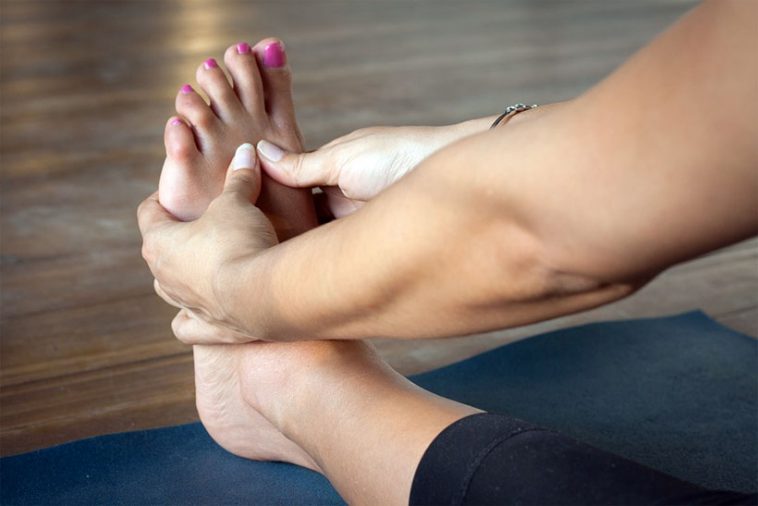- Like
- SHARE
- Digg
- Del
- Tumblr
- VKontakte
- Flattr
- Buffer
- Love This
- Save
- Odnoklassniki
- Meneame
- Blogger
- Amazon
- Yahoo Mail
- Gmail
- AOL
- Newsvine
- HackerNews
- Evernote
- MySpace
- Mail.ru
- Viadeo
- Line
- Comments
- Yummly
- SMS
- Viber
- Telegram
- JOIN
- Skype
- Facebook Messenger
- Kakao
- LiveJournal
- Yammer
- Edgar
- Fintel
- Mix
- Instapaper
- Copy Link
Introduction
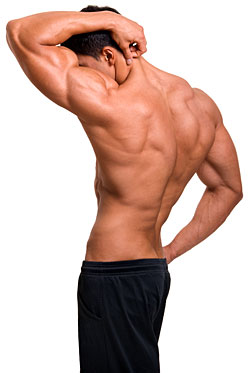 What Causes Muscle Soreness After a Workout, and What Can Be Done for Relief?
What Causes Muscle Soreness After a Workout, and What Can Be Done for Relief?
If you’re into fitness, you have no doubt experienced the dreaded muscle soreness in the day or so following a tough workout or trying a new style of exercise.
You’re shuffling around stiffly and groaning every time you try to sit down on the couch the day after leg day. Or perhaps you overdid the biceps curls and your tender arms are stuck in T-Rex position for days.
This phenomenon has a name: Delayed Onset Muscle Soreness, or DOMS. DOMS is completely normal, and doesn’t necessarily mean you did anything wrong in your workout. It occurs due to tiny tears in your muscle fibers caused by unaccustomed types of activity or new intensity.
As your body repairs these microtears, your muscles rebuild to become bigger, stronger, and to have more endurance. We only make gains in fitness through stressing the body in new ways to bring about new adaptations to these stressors.
It’s important to note that if you have acute pain in one area either during or after exercise, this is not normal, and you might have actually injured yourself. Sprains and strains are completely different from DOMS and may require medical treatment. Stop exercising and see a doctor if you’re not sure.
There is often a feeling of satisfaction in being sore after a hard workout because you know you’re going to bounce back better than before, but admit it, if you could decrease muscle soreness with simple tips and tricks, wouldn’t you want to?
Self-Myofascial Release with a Foam Roller
What is Self-Myofascial Release?
Self-Myofascial Release, or SMR, is a stretching technique in which an implement such as a foam roller is used to apply pressure to tight muscles to trigger a relaxation response.
SMR relieves painful knots within muscles without the price tag and inconvenience associated with a professional massage. When your tight muscles become more relaxed, you will find yourself with improved flexibility, a wider range of motion in your joints, as well as decreased soreness and tension.
With time, SMR has a great corrective effect on common muscle imbalances which lead to postural problems and predispose one to injury.
Since overactive (tight) muscles are the cause of poor posture, using SMR on these problem areas will allow your body to return to a more natural posture with time. Regular use of SMR also breaks up adhesions (scar tissue) within individual muscles and between muscles to improve quality of movement and reduce pain.
SMR is cheap, easy, and highly beneficial to the vast majority of exercisers. It’s basically like giving your muscles a deep tissue massage using nothing but a foam roller or other implement and your own body weight. If you are using a foam roller, simply place the roller on the floor and lay upon it with the roller placing pressure on the muscle you wish to target.
Roll slowly around on the targeted muscle until you find the most tender point, then relax and roll slowly back and forth until you feel a release of tension, which will usually happen between 30 seconds and a couple of minutes in the case of very tight muscles.
Check out the video below for a demonstration of self-myo on the calf muscles:
Key Areas to Target with Your Foam Roller
- Calves
- Hamstrings
- Glutes
- IT Band
- Quadriceps
- Hip Adductors
- Hip Flexors
- Lats
- Rhomboids
- Triceps
The Research on Foam Rolling
Foam rolling, also referred to as self-myofascial release, is a relatively new modality for remedying muscle soreness and speeding up recovery and it hasn’t been thoroughly researched. But, the amount of research that has been conducted is quite promising.
Studies show that, with the help of consistent foam rolling, athletes can significantly increase their joint range of motion when performing exercises like lunges and squats. Foam rolling also has been shown to improve muscle performance both before and after a workout.
Foam rolling is especially beneficial for athletes who are struggling with chronic issues like joint pain or iliotibial band syndrome. When coupled with proper support equipment during exercise, foam rolling is one of the options for overly tense or sore athletes.
How Does Self-Myofascial Release Work to Make Muscles Relax?
Muscles attach to bones via tendons, tough bands of connective tissue. In the tendons dwell a special kind of sensory receptor called the Golgi tendon organ (GTO). The GTO senses tension in the muscle and when excessive tension or stimulation is detected, it sends signals to the muscle which cause it to relax, releasing tension and allowing lengthening. This is called autogenic inhibition, meaning the muscle is receiving inhibitory signals from within itself.
The GTO needs about 30 seconds of stimulation to go through the process of autogenic inhibition and cause the muscle to relax. Thus, you’ll want to roll each muscle for a minimum of 30 seconds for SMR to work. If a particular muscle is quite tight, roll it for 1 or 2 minutes, especially when you’re first getting started with SMR.
As you integrate SMR into your training program, you’ll notice that your muscles become less tense at their baseline level, meaning you won’t need to devote as much time to rolling.
Top Benefits of Foam Rolling
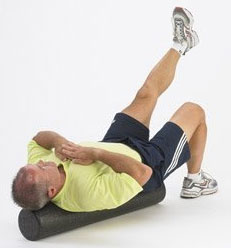 It’s hard to believe that a simple foam cylinder could provide so many physical health and fitness benefits, but oftentimes it’s the most basic pieces of equipment which can have the greatest effect. More major benefits of foam rolling include:
It’s hard to believe that a simple foam cylinder could provide so many physical health and fitness benefits, but oftentimes it’s the most basic pieces of equipment which can have the greatest effect. More major benefits of foam rolling include:
Increased Range of Motion – a 2015 study found an improved joint range of motion with application of a roller-massage as well as increased neuromuscular activity in the quadriceps and knee joint during a lunge. Looser joints and more elastic muscle and fascia tissue can effectively improve range of motion during physical activity.
Better Flexibility – the application of deep pressure into the myofascial layer, as well as the repeated movement of rolling back and forth, helps to increase blood circulation which flushes out waste byproducts and toxins from tissues. Doing this helps to relax muscles and allow them to be loosened, stretched, and made more limber.
Pain Relief – Pain stemming from joint inflammation, muscle tension, and spasming nerve endings may be alleviated by foam rolling. In fact, a 2017 study showed that foam rolling successfully reduced pain perception following delayed-onset muscle soreness (DOMS) from high-intensity physical exertion. Foam rollers come in a variety of shapes, sizes, and densities (i.e. firm, medium, etc). Check out the 15 best foam rollers for back pain.
Improved Lymphatic Flow – unlike your circulatory system, your lymphatic system, which is responsible for detecting and filtering out pathogens and toxins from the body, requires muscle contraction and release to properly keep flowing. Foam rolling is a practice which can help boost lymphatic flow and thusly bolster your body’s own immune defenses.
Support Better Posture Habits – when your back muscles are tense and sore, it’s natural to fall into a slumped or slouched body position when sitting or standing. As foam rolling helps to target pain relief to your back and hips, as well as improve range of motion and loosen joints, it can make it easier for you to routinely sit up straighter and remember good posture habits.
When Should I Perform Self-Myofascial Release?
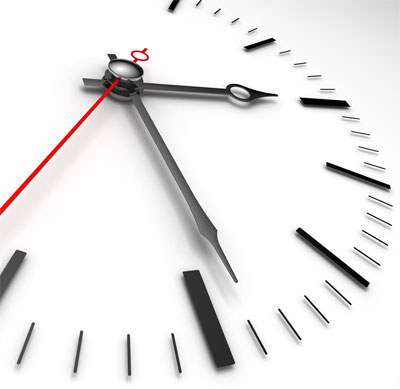 SMR is best performed at the very beginning of your workout as part of your warm-up and at the end during your cool-down. Go through your SMR routine before doing any static or dynamic stretches, but do warm up first for about 5 minutes with a light jog or walk.
SMR is best performed at the very beginning of your workout as part of your warm-up and at the end during your cool-down. Go through your SMR routine before doing any static or dynamic stretches, but do warm up first for about 5 minutes with a light jog or walk.
You should be warming up before ANY workout in this way. A light jog or walk gets the blood flowing throughout the body, increasing your core temperature so your muscles can contract properly and your joints can be safely taken through their full ranges of motion.
After working out, doing your SMR routine again during your cool-down helps restore your muscles to their ideal resting lengths and tensions, meaning you will recover more easily, and your posture and flexibility will be improved with time.
Who Should Use Self-Myofascial Release?
 The benefits of SMR apply to everyone from absolute beginners to highly conditioned athletes. SMR is a very versatile and effective modality which is beginning to garner wide acceptance among trainers and exercisers due to its efficacy and ease of use.
The benefits of SMR apply to everyone from absolute beginners to highly conditioned athletes. SMR is a very versatile and effective modality which is beginning to garner wide acceptance among trainers and exercisers due to its efficacy and ease of use.
The National Academy of Sports Medicine recommends SMR be integrated into all levels of training programs, from the beginning corrective level all the way through advanced performance training.
It’s simple: anyone who wants to increase flexibility and range of motion, decrease muscle pain and tension, relieve soreness, and prevent injury resulting from excessively tight muscles can benefit greatly from SMR. That pretty much covers all you readers, right?
Who doesn’t want to become more flexible, relieve soreness from your tough workouts, and prevent injuries which could leave you sidelined?
Foam Roller Equipment Recommendations
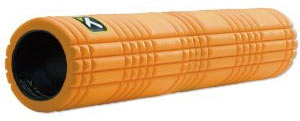
The best foam rollers are made of high-density foam for resiliency. Available in a variety of sizes and textures, they range from basic and affordable to fancy and a bit more expensive.
Here are a few Ask the Trainer approved options, starting with the most basic:
- OPTP Pro 36-inch Foam Roller: Durable basic model, no bells and whistles
- PhysioPhit High Density Foam Roller: Highly textured for a deeper massage
- Grid 2.0 Revolutionary EVA Foam Roller: Variety of surface texture options
Looking for even more performance? You must check out the following:
So should anyone NOT use Self-Myofascial Release? And are there any DON’TS?
People with circulatory problems, fibromyalgia, and other serious health concerns should consult with their doctor before using SMR or beginning any other new exercise program. And there are a few DON’TS for healthy exercisers which follow:
- DON’T roll recently injured areas. Allow the injury to heal before attempting to exercise the area.
- DON’T roll over bony prominences or over joints themselves. Stick to tender areas on the muscle itself. Otherwise, it’s possible to bruise your tissues or tweak your joints.
Still not convinced that foam rolling is legit? I make ALL my clients foam roll to help them prevent injury!
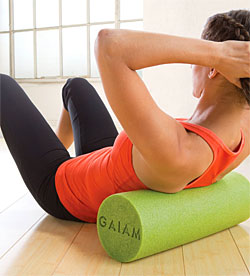
I have now been in the training field for over 13 years, and it has only been the last 3 years where I have seen the wonders of using this magical prehab tool. Now that I have found it, I refuse to let it go.
In fact, when ALL my clients arrive in the gym, they are required to use the foam roller to release inelastic adhesions within their overactive muscles. The overactive muscles that I typically see include the calf complex (gastrocnemius & soleus), the quadriceps, the gluteus maximus/medius, the latissimus dorsi, and pectorals.
Now, how again does using a foam roller on functionally tight muscles or any muscles reduce your risk of injury?
The answer to that question is, foam rolling aids the body by increasing range of motion at the joint specifically related to the muscle being rolled. Every joint of the body has an optimal range of motion. When that range of motion becomes compromised, a person will be more susceptible to injury.
The pressure you add to your body, through the use of a foam roller, aids in breaking up adhesions within the muscle, thus allowing the remaining elastic muscle tissue to work more efficiently to produce the aforementioned optimal joint range of motion.
Let’s talk more about my favorite muscle group to roll, the calf complex.
Adhesions in the calf complex can restrict range of motion of the ankle. The optimal range of the ankle is 15° for walking and 20° to squat. What does this mean to you? If you do not have this degree of flexion prior to exercise you are already working your way towards an injury! Some of the common injuries associated with restricted range of motion are Plantar Fasciitis, Achilles Tendinopathy, Chronic Ankle Instability, and Ankle sprains. These injuries are important to note because they will prevent you from being able to continue your training regimen.
Here’s a refresher on how to roll your calf muscles…
Sticking with the calf complex, it is typically the lateral aspect of the calf that is overactive and the medial aspect that is underactive. When rolling your calf, it is important to turn your foot outward at a 45° angle. Start with the foam roller above the ankle and allow it to roll in the direction of the knee. I personally recommend rolling 1 inch towards the knee and then rolling ½ inch back towards the ankle as you work your way towards the knee.
If you experience an increase in pain in any particular spot during the roll, you should hold that area against the foam roller for at least 30 seconds to allow the adhesion to break up. Finding the areas of greatest discomfort and allowing the foam roller to do its work is not pleasant, but it is necessary.
After foam rolling, you will see an immediate increase in the ankle joint range of motion. Most people will end up rather close to the 20° necessary to squat.
And again, when is the best time to foam roll to help prevent injury? Let’s have a refresher!
Time is often a factor when attempting to exercise. I typically block off an hour for a client, but in that hour of exercise, I make sure we begin our routine by setting aside 10 minutes to foam roll. While I suggest that you foam roll prior to exercise, this tool can also be used post exercise to reduce muscle soreness post workout.
No matter what your fitness goal may be, there is always room to add the foam roller into your routine. Time not spent rehabbing an injury is time spent working towards maximal gains and other fitness goal achievements! Prehab is always better than Rehab!
Top Tips to See the Best Results From Foam Rolling
In order to see the greatest amount of benefits from foam rolling, it’s important to use proper technique when working on your tight, aching muscles.
Keep these tips in mind to get the most out of each foam rolling session:
1. Take a Full-Body Approach
Sometimes, you hold tension in areas that aren’t actually sore. Don’t focus solely on the areas that are noticeably sore or tense. Instead, take some time to roll out all the large muscles in the body, including the calves, quads, glutes, hip flexors, thoracic spine, and pectoral muscles. This will help you loosen everything up and minimize discomfort throughout the body.
2. Don’t Chase the Pain
No pain, no gain is not the right attitude to take when it comes to foam rolling. Foam rolling often comes with quite a bit of discomfort, but you shouldn’t feel extreme pain.
If you’re not able to breathe deeply and fully while rolling over a specific area, you’re using too much pressure and need to lighten up.
3. Don’t Roll Over Injured Areas
In the same vein, make sure you’re also not rolling directly over injured areas. For example, if your iliotibial band hurts, don’t foam roll directly on top of it.
Instead, focus on loosening up the muscles around the iliotibial band — the glutes, quads, and hamstrings. When these muscles are tight, they can pull on your iliotibial band and cause pain and inflammation.
4. Take Your Time
To see the greatest results from your foam rolling session, be sure to move slowly so your muscles have time to really relax.
That being said, don’t move too slowly, either. Dedicate between one and two minutes to each muscle group before moving on.
If you go beyond this, you could end up with bruises. You might also irritate the tissue to produce further inflammation, and, you could even cause nerve damage.
5. Use Good Form
If you’re foam rolling properly, your body temperature is definitely going to increase. This is especially true when you’re rolling out large muscle groups like the glutes, quads, and hamstrings.
Proper foam rolling form requires you to support yourself with your weight primarily on your hands while keeping your core engaged. This engagement is especially important for avoiding twisting that could hurt your back.
6. Be Patient
Finally, remember that it can take a little while for you to start to experience the benefits of foam rolling. It’s definitely not a one-time fix.
Make sure you’re consistent — foam roll daily, if possible, or at least 3-4 times per week.
Foam Rolling Reminders
 When it comes to foam rolling, you do want to take care to practice good rolling mechanics and avoid exacerbating (or causing) an injury. Don’t forget these important reminders:
When it comes to foam rolling, you do want to take care to practice good rolling mechanics and avoid exacerbating (or causing) an injury. Don’t forget these important reminders:
Learn – ask a trainer at your gym about proper foam rolling technique or watch guided online videos from knowledgeable instructors who can show you the do’s and don’ts of foam rolling. For example, you never want to roll directly over bones or joints, but you do want to focus on trigger points in your sore muscles.
Go slow and breath – rolling back and forth as fast as you can over your roller doesn’t guarantee you the benefits of the deep fascial pressure therapy you’re looking for. Experts recommend rolling about one inch per second and practice deep breathing techniques; this allows you to better control your stretch and release, and gives the roller ample time to break up tight myofascial tissue.
Keep it up – the most optimal results from foam rolling are found when it is done regularly, multiple days a week either before or after a workout. Experts recommend 3 to 5 sets of consistent 20 to 30-second repetitions.
Don’t roll through pain – foam rolling will often feel more intense than stretching, and over sore trigger points in muscles like your glutes or quads, for example, can even mirror a pain like you would feel with a deep tissue massage. Severe and sudden pain, however, shouldn’t be ignored as you can aggravate an existing injury or potentially cause a new one.
Final Thoughts
SMR is best used in conjunction with other forms of flexibility training for maximum results. Integrate the use of a foam roller with your static and/or dynamic stretching routine to experience accelerated progress.
An extended SMR program is also a great choice for recovery days. Foam rollers can help with muscle pains, but if the issue is from a misaligned disk or joint, seeing a chiropractor may be the better choice.
As with any flexibility program, or exercise program in general, it takes time to experience the full range of benefits or SMR, so give it a chance and then stick with it!
Self-Myofascial Release with a Foam Roller: References
1. Clark, M.A., Lucett, S.C., and Sutton, B.G., (Eds.). (2012). Flexibility training concepts. NASM essentials of personal fitness training. Philadelphia: Lippincott Williams & Wilkins.
2. Rasminsky, A., Richardson, M., & Tang, H. (2008). Release Me. Dance Spirit, 12(8), 84-85.
3. Robertson, M. (2008). Self-myofascial release: Purpose, method, and techniques. Robertson Training Systems, www.robertsontrainingsystems.com.
See Also:
- Common Muscle Imbalances and How to Correct Them
- How to Correct Hunchback Posture Problems
- Best Morning Stretching Routine
Nine Quick Tips for Decreasing Muscle Soreness
 Try these 9 tips designed to decrease normal muscle soreness and prevent extreme soreness from happening at all:
Try these 9 tips designed to decrease normal muscle soreness and prevent extreme soreness from happening at all:
Tip 1: Keep Moving
If you’re intensely sore, the last thing you want to do is more exercise. But sometimes that’s just what you need to get the blood flowing, easing stiffness and soreness and speeding up the repair process. Try going for a walk, jog, or bike ride.
If it’s been 48 hours since the workout that caused the soreness, it’s usually OK to tough it out for some more weight training. You’ll generally feel better as you get into the workout. However, if the soreness is extreme, your body is telling you that you need more recovery time. Choose walking and other mild forms of exercise and hold off on more weight training until the soreness is more manageable.
Tip 2: Stretch and Foam Roll
 Stretching is your first defense against allowing extreme soreness to occur in the first place. You should be stretching before and after working out as part of your warm-up and cool-down process. Doing self-myofascial release (SMFR) with a foam roller just prior to any stretching is always a good idea. SMFR causes your muscles to release tension by sending a signal to the nervous system to relax the muscle being stimulated. When your muscles are more relaxed, you get more out of your stretches. It’s like giving yourself a deep tissue massage, and it’s a lot cheaper!
Stretching is your first defense against allowing extreme soreness to occur in the first place. You should be stretching before and after working out as part of your warm-up and cool-down process. Doing self-myofascial release (SMFR) with a foam roller just prior to any stretching is always a good idea. SMFR causes your muscles to release tension by sending a signal to the nervous system to relax the muscle being stimulated. When your muscles are more relaxed, you get more out of your stretches. It’s like giving yourself a deep tissue massage, and it’s a lot cheaper!
If you’re already sore, stretching and foam rolling can ease the symptoms significantly. Use foam rolling and stretching alongside walking and other mild forms of exercise to “keep moving” as suggested in the first tip.
See Also: Self-myofascial Release with a Foam Roller
Tip 3: Soak
Take a hot bath, or even better, relax in a hot tub or mineral bath if you have access to one. The heat helps your muscles to relax and release the excess tension that makes the soreness worse. Increased blood flow can help speed your body’s recovery time.
Tip 4: Ice & Heat
Similar to soaking, alternating between ice and heat helps relieve the sensation of soreness and may lessen recovery time. Ice for no more than 20 minutes. Use an ice block like you’d put in a lunch box, a bag of frozen peas, or whatever else you’ve got that’s icy cold.
Heat can be applied for slightly longer, but don’t overdo it. 30 minutes works well. Try a heating pad or hot water bottle.
Tip 5: Massage
A good massage from a strong massage therapist who’s not afraid to apply deep pressure feels amazing when you’re sore. Massage also speeds recovery time and can even help correct posture problems if you get massages regularly.
If you can find a therapist offering sports massage, even better, because they’re trained in techniques to help athletes’ muscle recovery. The same principles behind self-myofascial release with a foam roller are at work in massage.
Tip 6: Rest and Pace Yourself
 Sometimes the best thing to do is take some well-earned recovery time. You should always rest muscle groups for 48 hours between training sessions, but an extended time-out may be called for in cases of extreme soreness. Being super-sore is your body’s way of telling you that you overdid it and that you need to take it easy for a while.
Sometimes the best thing to do is take some well-earned recovery time. You should always rest muscle groups for 48 hours between training sessions, but an extended time-out may be called for in cases of extreme soreness. Being super-sore is your body’s way of telling you that you overdid it and that you need to take it easy for a while.
You may be remembering that tip #1 was to keep moving and wondering why I’m now telling you to rest. Decreasing DOMS isn’t an exact science and different approaches may work well for different people or for the same person on a different day. Play it by ear and experiment to find what will work best for you under the current circumstances.
And resting doesn’t necessarily mean laying around doing nothing: walking and stretching are excellent choices for rest days.
See Also: What is Active Recovery?
Tip 7: Nutrition & Supplementation
Eat a balanced diet including plenty of protein, enough carbs to maintain your energy levels, and enough good fats to help with recovery and cell repair. A balanced diet means different things to different people, but here are some basic practical guidelines: avoid processed foods and refined sugars, prepare most meals at home using whole food ingredients, and hit up a salad bar if you’re eating on the run. Most dietary recommendations follow the 60-20-20 rule: 60% of calories from carbs, 20% from protein, and 20% from fats.
Protein is vital to muscle recovery. If you don’t get enough protein in your diet, consider supplementing with whey protein isolate or other quick-absorbing high-quality protein supplements immediately following your workout.
L-Glutamine is a supplement you can take to support muscle development that may be helpful in preventing muscle soreness. Also, there is some good evidence that fish oil can help with muscle recovery. There are many great reasons to take fish oil, including enhanced joint health and mental function. I recommend that most everyone supplement with fish oil whether they’re concerned with muscle recovery or not.
Tip 8: Ibuprofen
Ibuprofen should not be your first choice, but if you’re struggling to get through the day due to extreme muscle soreness and tenderness, go ahead and take some. I’ll admit that ibuprofen has saved my butt a few times!
Never rely on ibuprofen, though, because excessive use can tear up your digestive system and damage your liver. Never take more than the recommended dosage.
Tip 9: Coffee (?)
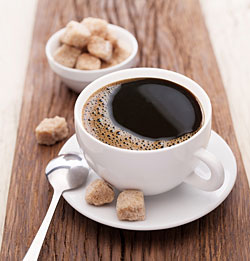 I don’t think I need additional help justifying my caffeine habit, but I thought this was fascinating: a recent study from the University of Georgia showed that women who consumed the equivalent of about two cups of coffee decreased their DOMS. They’re not sure yet if the results translate to men or more habitual coffee drinkers, but it’s an interesting idea! Hopefully they find out that chocolate works too…
I don’t think I need additional help justifying my caffeine habit, but I thought this was fascinating: a recent study from the University of Georgia showed that women who consumed the equivalent of about two cups of coffee decreased their DOMS. They’re not sure yet if the results translate to men or more habitual coffee drinkers, but it’s an interesting idea! Hopefully they find out that chocolate works too…
See Also: https://www.askthetrainer.com/caffeine-exercise-performance/
An Ounce of Prevention…
…is still worth a pound of cure. Prioritize a good warm-up and cool-down including self-myofascial release and stretching when you work out and you’ll prevent extreme soreness from happening in the first place.
How a Proper Cool-Down After Exercise can Help Decrease Muscle Soreness

For many exercisers, the cool-down is the most neglected part of a workout. Most people have never learned the reasons why a cool-down is important, much less the proper way to do a cool-down.
Many of us focus on the warm-up to get ready for the harder work to come during the actual workout, then overlook balancing our workouts by getting our bodies back to an optimal resting state by cooling down. If you’re not warming up either, you need to look into that right away and make sure to add a warm up before every work out!
In this article, I’ll explain the ins and outs of cool-downs, which you should be doing AFTER EVERY WORKOUT, without exception. I’ll explain why you should cool-down, how to structure a cool-down into your workout routine, and what types of exercises to choose for your cool-down.
Why Cool-Down After Exercise?
Put simply, a cool-down period after a workout allows the body to transition smoothly and safely from a state of exertion to a state of rest. You can think of the cool-down as being the opposite of the warm-up, mirroring the warm-up process, but leading you in the opposite direction. Instead of transitioning from everyday life into an intense workout like a warm-up, a cool-down transitions you from an intense workout back into everyday life.
Benefits of Cooling Down
There are many physiological benefits to cooling down. During a cool-down, you will:
 Improve posture, decrease soreness, and prevent future injury by resetting your neuromuscular system, returning your muscles to their correct length-tension relationships
Improve posture, decrease soreness, and prevent future injury by resetting your neuromuscular system, returning your muscles to their correct length-tension relationships- Experience a safe, smooth transition back to a resting state by gradually restoring physiological systems such as heart rate, blood pressure, body temperature, and blood plasma concentration back to baseline levels
- Increase your flexibility, as stretching after exercise has been proven to lead to increases in joint range of motion
- Prevent unpleasant possible aftereffects of exercise such as dizziness and nausea, which is often caused by blood pooling in the lower extremities
You can also use the cool-down period as a psychological transition time. Your body will be pumped from working out, and likely releasing endorphins, possibly giving you that “runner’s high” feeling. Focus on deep, diaphragmatic breathing to increase your oxygenation. Reflect on your workout and all that you accomplished, congratulating yourself for your hard work. Think about your goals for the rest of the day and benefit from the boost in mental clarity and self-confidence many experience right after a workout.
How to Add a Cool-Down to Your Exercise Routine
The cool-down is actually fairly simple. The best cool-down is about 10 minutes total: 5 minutes of low-intensity cardiorespiratory exercise immediately followed by 5 minutes of flexibility exercises.
Make sure to schedule enough time in your workout to devote to your cool-down. Don’t schedule yourself so tightly that you have to leave the gym immediately after working out to go on to your next activity. I know that’s tough in our busy, busy, busy culture where most of us are juggling myriad responsibilities throughout the day, but you have 10 extra minutes in the day to devote to yourself.
If you want to see the best results and experience the most health benefits from exercising you need to spend those 10 extra minutes of your day finishing your workout right by adding a cool-down to your exercise routine.
Cool-Down Exercise Possibilities: Cardio
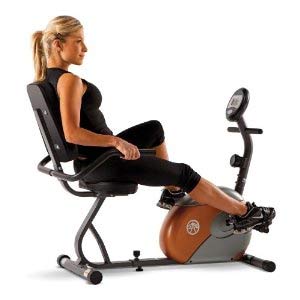 The first phase of your cool-down should be 5 minutes of light cardio. The choice is yours and should be dictated by what type of cardio you prefer. Options will be different based on whether you are exercising at home versus at the gym where you will have more cardio equipment available.
The first phase of your cool-down should be 5 minutes of light cardio. The choice is yours and should be dictated by what type of cardio you prefer. Options will be different based on whether you are exercising at home versus at the gym where you will have more cardio equipment available.
At home, your 5-minute cardio cool-down can be a slow jog, a fast walk, or even a couple of light Zumba routines if dance workouts are your thing!
At the gym, your options are more varied, including the elliptical trainer, stationary bike, treadmill, stair-stepper, and rowing machine. I prefer to opt for cardio machines that keep me standing and burning more calories such as the elliptical, treadmill, and stair stepper.
Cool-Down Exercise Possibilities: Flexibility
 The second phase of your cool-down should consist of 5 minutes of flexibility exercises. Options for flexibility training include self-myofascial release, static stretching, dynamic stretching, or any combination of those modalities.
The second phase of your cool-down should consist of 5 minutes of flexibility exercises. Options for flexibility training include self-myofascial release, static stretching, dynamic stretching, or any combination of those modalities.
Focus on areas of your body which you find to be habitually tight in addition to the body parts you trained during your workout. If you need help determining what areas of your body are tight and in need of flexibility training, see a personal trainer.
Ideally, you’ll start with self-myofascial release (SMR) and then transition to static or dynamic stretches. SMR is very effective for relaxing tight, overactive tissues and decreasing soreness. Basically, you use an implement such as a foam roller to give yourself a deep-tissue massage. Follow SMR with a static or dynamic stretch on that same body part.
Click here to read more about how to perform SMR.
Check out this video for a demonstration of how to foam-roll your calf muscles, which are tight on many exercisers.
Static stretches are the classic stretch where you assume a position, then hold for 20-30 seconds.
Focus on areas you know to be tight or that you hit hard during your workout.
For example, if you have just performed SMR on your tight calves, you can follow up with a static calf stretch such as the one demonstrated in the video.
Dynamic stretching is an advanced flexibility technique where you move a joint through its full range of motion. Some people perform dynamic stretches during their cool-down, but SMR combined with static stretching is considered the safest and most effective by such authorities as the National Academy of Sports Medicine.
Sample Cool-Down Routine
| Phase of Cool-Down | Exercise Example | Duration |
| Cardio training | Elliptical machine | 5 minutes |
| Flexibility training: SMR | Calves TFL and IT band Quadriceps Latissimus Dorsi | 30 seconds for each area |
| Flexibility training: Static | Calves TFL and IT band Quadriceps Latissimus Dorsi | 30 seconds for each area |
Keep in mind that the exercises in this table represent a sample cool-down routine. Your own cool-down will vary based on your cardio preferences and the areas of your body that require flexibility training. Be sure to consult a personal trainer if you need help designing a cool-down or any other aspect of your exercise program.
The Importance of a Cool-Down After Exercise: References
1. Clark, M.A., Lucett, S.C., and Sutton, B.G., (Eds.). (2012). NASM essentials of personal fitness training. Philadelphia: Lippincott Williams & Wilkins.
2. Gonya, E. (2012) The importance of warm up, cool down and flexibility in injury prevention. Aurora Health Care, http://www.aurorahealthcare.org/services/smi/chalk-talk/warm-up.asp
3. Mac, B. (2012). Injury prevention. Sports Coach, http://www.brianmac.co.uk/articles/scni46a2.htm
Five Quick Tips for Sore Muscles After Exercise
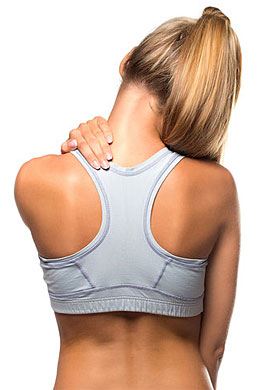 Feeling “Tore Up” After Your Latest Workout? Ease the Soreness with Some Quick Tricks!
Feeling “Tore Up” After Your Latest Workout? Ease the Soreness with Some Quick Tricks!
You know you’ve had a good workout at the gym when your muscles are sore and aching the following day. Also known as Delayed Onset Muscle Soreness (DOMS), this is the direct result of microscopic tears in the muscle tissue. Most people experience DOMS after performing bouts of intense strength training and HIIT exercises. These intense workouts creates small tears in the muscle fibers, leading to a general sore, aching sensation in the days to follow.
You will also experience muscle soreness when starting a new workout program or changing up your phase of training. If your workout fails to make you sore at all, it actually may be time to change it up! Muscle soreness is “productive pain”, meaning that it is normal and in fact a necessary evil when you’re getting stronger. Soreness is an indication that you have challenged your muscles enough that they will become better, faster, and stronger as they heal. Part of healing your sore muscles is just waiting it out. Nothing can take the soreness away 100% except time.
Thankfully, though, you can reduce some of the uncomfortable super-sore feelings by trying a few simple tricks.
#1. Mild-Pressure Massage
A mild-pressure massage can be an effective technique for reducing muscle soreness following an intense workout. The light pressure of a massage will naturally reduce tension while improving circulation. In addition to reducing muscle pain, a mild-pressure massage will also encourage faster recovery thanks to the increase in blood flow. Just remember to stick with mild-pressure massages and not heavy deep-tissue massages. Deep tissue massage is great, but not so much the day after leg day! As an alternative to paying for a massage, consider self-myofascial release using a foam roller, which is something you should be doing anyway during your warm ups and cool downs.
#2. Ice Pack
Don’t worry about those crazy ice baths you see athletes taking in movies. Brrrr! However, you can use the same principle by applying a simple ice pack. A bag of frozen peas works well, because the small, round veggies inside the sack will conform to the shape of whatever you’re icing. Applying ice can ease up some of the pain and swelling caused by the muscle tears from a hard workout. The cool sensation will naturally reduce some of your post-workout pain along with minor amounts of inflammation. The best practice is to place the ice pack on your affected muscles for no more than 20 minutes, remove and wait 10-20 minutes before reapplying, and only repeating a couple of times. Too much icing can lead to tissue damage.
#3. Heat Compress
A heat compress can work just as well as — if not better than — an ice pack. In a pinch, you can pick up disposable heating pads from most drug stores for less than a buck a piece, but a more eco-friendly long-term solution is to invest in a small electronic heating pad. Place either of these items directly on the affected muscles for 20-30 minutes. Don’t heat sore muscles for more than 20-30 minutes or it may become counterproductive, causing more swelling. If a heat compress alone isn’t offering enough relief, use it in conjunction with an ice pack, alternating between the two in 20-minute intervals. If you’re going to work out again and are trying to ease up some of the soreness beforehand, you can use heat for that, too. Applying heat to the sore areas will help get the blood flowing and decrease tension. Icing before a workout is a bad idea because it decreases needed blood flow to the area, but it’s just fine afterwards. The reverse is true for heat. If you’re applying heat or ice before or after workouts, remember this rule: “heat before, ice after.”
#4. “Hair of the Dog”
If you’re super sore and stiff in the days following a particularly intense workout, sometimes the best thing is to JUST GET MOVING. It’s kind of like the old practice of “the hair of the dog that bit you” for a hangover, but it’s much healthier in the long run. Although when you’re sore and tired, you might feel like doing nothing but laying around lamenting your state, try some light exercise. Keep it mild. Try walking or some other light cardio. Maybe some yoga or an easy bike ride. If it’s been over 48 hours, try some strength training that was similar to what made you sore in the first place, but with the intensity dialed back. Exercise will promote blood flow to the areas and speed your body’s natural healing processes. It might seem counterintuitive, but when you have muscle soreness, one of the worst things you can do is just sit around doing nothing. That just compounds the problem.
#5. Suck it Up and Work Through it
Remember that some soreness is a natural and needed part of becoming stronger and more fit. When you’re doing regular workouts with proper progressions, you WILL get sore. There’s just no getting around it! Try to embrace the sore feeling and congratulate yourself for kicking your own butt to the level needed to make improvements. Unless you have an injury, or the soreness is very severe, you need to keep going with your regular workouts, making sure you rest 48 hours between strength training sessions for the same muscle groups. If you’re serious about strength training, it’s not a good idea to take more than a couple days off max. Work through the soreness, and with time, you will become less sore. When your workout doesn’t make you sore at all for an extended period of time, it’s time to consider progressing to the next level so you can get that “productive pain” back!
BONUS #6. Non-Steroidal Anti-Inflammatory Drugs (NSAIDs)
Another technique for soothing post-workout muscle pain is to take a non-steroidal anti-inflammatory drug (NSAID), such as ibuprofen, aspirin, or naproxen sodium. Unlike acetaminophen (Tylenow), NSAIDs work by reducing inflammation within the body. When the muscle fibers are torn from intense workout sessions, they may also experience some inflammation. Taking an NSAID will target inflammation caused by your workouts, reducing both the swelling along with some of the pain associated with it. That being said, only take NSAIDs when it’s absolutely necessary. Taking too much NSAIDs on a regular basis can adversely affect your health in a number of different ways. They will also become less effective with overuse.
The Bottom Line
Muscle soreness doesn’t have to stop you in your tracks! Next time you’ve got that sore, tender feeling in the days following a tough workout session, try the simple tricks we’ve discussed above to find out what will work best to get you back in action.
See Also:
Eight Ways to Relax Your Body and Mind After an Intense Workout Day
 Relaxation after a vigorous workout day is a great way to reset your body and mind to prepare yourself for the day ahead. However, are you finding it difficult? Are you looking for healthy ways to relax in the evening after a taxing day but aren’t quite sure where to start? You’re not alone.
Relaxation after a vigorous workout day is a great way to reset your body and mind to prepare yourself for the day ahead. However, are you finding it difficult? Are you looking for healthy ways to relax in the evening after a taxing day but aren’t quite sure where to start? You’re not alone.
Perhaps you have a lot of things to do tomorrow – work, grocery shopping, dropping off and picking up the kids from school, or maybe visiting clients. These activities can be mentally and physically taxing, especially if your body and mind has not had enough time to unwind from the previous day. Over time, this can be exhausting and you may even begin to feel like your workout sessions were a waste. The worst case outcome here is that it can affect your overall well-being.
Everybody that works out has good intentions before going for it yet some are more successful than the others. Although the pros of working out are really visible in the person, the cons and side effects can also be really annoying which may leave you with aches and pains. Living a healthy life shouldn’t involve fatigue and pain, that’s why you should take some extra steps after a day of exercise to unwind before moving on to the next.
To help your body and mind relax after a tiring day, here are some healthy ways to make that happen without you having to stress yourself even more. Try doing at least one of these things to prepare for the next day, get the most out of your workouts, and lower the stress in your life.
8 Post-Workout-Day Activities to Help You Feel Better
Here are eight different activities to help you relax after an intense day of exercise and life.
#1. Try A Weighted Blanket
Nothing feels more amazing after a workout day than being wrapped up in a warm hug from your blanket. The weighted blanket is one of the biggest wellness trends today and it also does a lot for you after a workout day. It helps relaxes all your muscles and joints without you having to do anything other than just being wrapped up in it.
#2. Take a Warm or Cold Bath or Shower
A great way to wash off the tension and pressure that comes with working out is by bathing. Water does a very good job of calming your mind and soul. Go for a nice hot shower and enjoy the relaxation of your muscles that comes with it or the energizing of the body cell that comes with a splashing of cold water on your body (I prefer this in the morning!). If you’re making use of a bathtub, don’t forget to moisturize your body after enjoying a long soak.
#3. Get in Some Sauna Time
The heat from a sauna is a fantastic way to relax your muscles and tire yourself out so you can get in a solid night’s rest. The stress that you’ve accumulated during the day’s workout session and your day-to-day activities just melts away as the heat helps your muscles relax. Added to the fact that a sauna feels good, it is also great from a general wellness perspective. Besides the heat assisting with muscle relaxation, the heat in a sauna can also help you burn fat a little.
#4. Get a Massage
After a workout, getting a good massage can be relaxing and at the same time very healthy. A massage assists in releasing muscle tension which can help your muscles heal faster and help your overall body to relax. Getting a hot massage is a great choice as they really help melt away tension and the stress that builds up after a workout session. Besides the relaxing benefits, massage offer a variety of health-related benefits which are not limited to but also include reduction of anxiety, general alertness, and even improved sleep quality.
#5. Relax With Calming Music
Go for quietness and peace with some cool and soothing tunes. Your mood is usually influenced by the kind of music you listen to. To promote relaxation, a fast and loud genre of music should be avoided. As you relax and listen to this music, your mind and muscles also relax. Slow music can help you breathe properly and reduce the rate at which your heart beats which can help you to get a better night’s sleep.
#6. Meditate
Meditation is not only when you chant “ohm” while sitting in a lotus flower position. People may utilize a different position and try other ways to meditate. While some people get a comfortable chair and cover their eyes with an eye mask, others find ways to channel the energy they’ve gathered from the workout and stressful day into positivity.
#7. Get Adequate Sleep
There is no better way to restore your energy and relax your body than getting good sleep. Though for many of us, this can be really challenging, especially after an intense workout session and accompanying stressful day. If time permits, it is usually great to take a little nap and get your body and mind back in order to “restore your body factory settings.” If you’re not able to get in a nap during the day, try to unwind early in the late evening by utilizing some of the other tips on this list. These tips can help relax you which will make it easier for you to fall sleep. Also, shut off your phone at least an hour before it’s time to get in bed or utilize a blue light filter at the minimum. The unnatural blue light from your phone messes with your circadian rhythm and will make it harder for you to fall asleep.
#8. Read a Book or Watch a Relaxing Movie
Sometimes, the most ideal way to relax your mind and body and still enjoy your time is by doing some brain work! A great way to achieve this is by either reading a books or watching a relaxing movie, if you’re someone that doesn’t love reading that is. There is honestly no substitute for a good old fashioned book.
The Bottom Line
It is very important to relax after a strenuous workout day without putting additional stress on yourself. The human body requires time to rest after exercise to allow the muscles to recover. In addition to your body, rest and recovery also prepares your mind for the next crazy day. But just as relaxation is important, so too is making exercise a habit and a regular activity in your life, and by utilizing these tips with diligence, we’re confident you will enjoy the rewards of living a healthy life.
Five Rest Day Hacks to Maximize Recovery
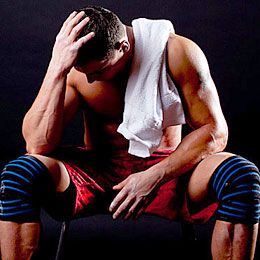 The Necessity of Regular Rest Days
The Necessity of Regular Rest Days
Everyone knows that regular exercise is an essential part of a healthy lifestyle. But, it’s important to remember that regular rest days are also necessary.
Rest days help you avoid injuries, continue to see improvements in the gym, and keep your immune system functioning properly.
Five Rest Day Hacks to Maximize Recovery
In order to maximize your recovery and get the most out of your rest days, make sure you’re doing these five things every time you take some time off from training.
#1. Get Plenty of Sleep
Most of your muscle repair occurs when you’re sleeping. During deep REM sleep, your body produces growth hormone, which is necessary for rebuilding and repairing the muscles that you’ve broken down during your workouts.
You should be prioritizing sleep every night, but your rest days can be good opportunities to catch up and get a little extra rest. Let yourself sleep in a bit, or hit the hay earlier than usual for some additional shut-eye.
#2. Make Sure Your Diet is Still on Point
Taking a day off from the gym doesn’t mean you should take a day off from eating a healthy, balanced diet. It’s fine to treat yourself every once in a while, but don’t treat every rest day as an opportunity to eat everything in sight.
Make sure you’re still consuming a sufficient amount of carbohydrates, proteins, and fats. And, don’t forget about micronutrients. Make sure you’re eating plenty of vegetables and fruits to get all the nutrients that your body needs to recover, such as vitamin C and magnesium.
Be sure to also eat plenty of foods that are rich in omega-3 fatty acids, which fight the inflammation that can occur after a tough workout. Good sources of omega-3s include salmon, olive oil, sardines, eggs, and avocados.
#3. Keep Moving
Taking a rest day doesn’t mean you have to spend hours at a time lounging on the couch. In fact, low-impact movement can actually help speed up your recovery. It does this by keeping your blood circulating, which helps distribute essential nutrients to your muscles.
Some good options for low-impact exercise include:
- Walking
- Swimming
- Cycling
- Rowing
- Elliptical
Your rest day can also be a good opportunity to get out and do something fun that you don’t typically have time for. Go for a hike or take a family trip to the park.
#4. Roll Out Sore Muscles
Self-myofascial release, also known as SMR, is a great option for getting rid of tension and speeding up muscle recovery.
Some of the benefits of SMR include:
- Relaxes tight muscles
- Improves circulation to reduce soreness
- Improves range of motion
- Improves muscle elasticity
- Boosts the production of cytokines, which help minimize inflammation
SMR works best when you use either a foam roller or a massage tool like a roller ball. Foam rollers work best for massaging large muscle groups like the legs and upper back, and massage balls can be used for smaller knots in the neck, shoulders, or feet.
#5. Stay Hydrated
When you’re working out, it’s easy to remember to stay hydrated, but it can be harder to make sure you’re drinking enough water on your days off.
Don’t forget that adequate hydration helps your muscles recover faster. It improves your body’s ability to flush out toxins, including the lactic acid that builds up in sore muscles.
If you get bored just drinking plain water, add some calorie-free flavoring in the form of lemon, lime, or cucumber slices. You can also drink herbal tea if you prefer a warm drink.
How Often Should You Take Rest Days?
Everybody is different and needs a different amount of time to recover. But, a good rule of thumb if you’re just starting to workout regularly is to take one day off for every two consecutive days of exercise.
Remember, it’s better to start slow and then increase the frequency of your workouts later than it is to take on too much and get burned out.
Wrapping Up
Are you taking enough rest days? Could you be doing more on your rest days to improve your recovery? If you’re not getting enough out of your rest days, give these five hacks a try to start seeing better results.
What is Active Recovery and How Does it Help Sore Muscles?
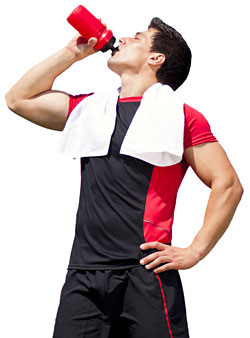
As athletes and fitness enthusiasts, our work ethic towards exercise follows a common philosophy: train hard and you’ll see results. Most driven athletes are used to and even look forward to strenuous training. This includes obstacle athletes, who participate in a sport that’s founded on a series of challenges combined with running over various terrain.
To prepare for the challenges of any obstacle, you target your workouts to meet your goals, which can be demanding with running, CrossFit-like training, etc.
In order to prepare your body for an intense workout, you warm-up before and cool down after workouts. You know a warm-up and cool-down may help delay soreness as well as improve range of motion and mobility. This will also help you optimize performance for your future training sessions.
But after consecutive days of training, the wear and tear your body endures may call for an extended recovery, with a focus on flexibility, mobility, and repair beyond the warm-up and cool-down. An effective training program requires a structured recovery period just as much as a vigorous workout sequence. Hence the need for active recovery.
Let’s go over the what, why, how, and when of active recovery.
Active Recovery: What it Is & What it Isn’t
First and foremost, an active recovery goes beyond not doing anything at all. During an active recovery week, your workouts will focus on less intense activity to give your tired muscles a break from heavy lifting, intense circuits, and other vigorous training methods. Instead of performing cleans or running sprints, you’ll be doing leg swings, single leg squats, and other dynamic flexibility and core exercises. This will rest both your mind and muscles from intense training.
The Benefits of Active Recovery: The Why
Active recovery has several benefits. By taking some time to scale back regularly, you’ll reach the following results:
- Prevent overtraining. Consecutive weeks of intense workouts will take a toll on you and your body, placing you at risk for overtraining syndrome. Taking some time to take it down a notch may help prevent plateaus, tiredness, and other drawbacks associated with overtraining.
- Prevent injuries. Vigorous training, although important to improve performance, can put you at risk for injury after weeks without taking a break. Taking some time to taper down will help keep injuries at bay
- Reinforce and improve flexibility & mobility. Devoting additional time to static stretches, foam rolling, and dynamic flexibility will go a long way towards keeping you limber, boosting your mobility, and improving your posture.
- Give your mind a rest. Your mind exerts a lot of energy in efforts to endure tough training sessions: from executing a single rep max to gathering the toughness to get through a metabolic circuit. An extended break from rigorous training will rest your mind and central nervous system.
How to Recover: Six Common Components of Active Recovery
Overall, active recovery provides you with an opportunity to focus on flexibility and mobility. Incorporating a few of the components below will help you address this focus.
1. Self-Myofascial Release (SMFR)
Self-Myofascial Release (SMFR), accomplished through foam rolling, allows you to target the connective tissue that organize muscle fibers. Sometimes when muscles become very tight, the connective tissue that organize them tighten up as well. Self-myofascial release has a similar impact as a deep muscle tissue massage, rolling out tender connective tissue and muscles. This will help enhance flexibility and mobility.
2. Stretching
Static stretches and dynamic flexibility exercises are also great components to add to your active recovery sessions. Static stretching will help you address tight areas, re-establishing appropriate length-tension relationships. Dynamic flexibility will help you improve your range of motion.
3. Basic core and bodyweight exercises
To keep stimulating some of the muscle groups you’ve been working during your intense training sessions, you can incorporate core and bodyweight equivalents of exercises you’ve been completing as part of your resistance training program. Bodyweight exercises such as push-ups, squats, lunges, supermans, and others are some great exercises worth including during your recovery week, just don’t overdue things of course.
4. Leisure activity
Engaging in a leisure activity during an active recovery day will have a cross-training effect on your exercise program. Since running, strength, core, and metabolic training characterize an obstacle race training program, an easy walk or hike, swim, or bike ride are all good options. Make sure it’s a low to moderate impact activity to take a break from the high intensity work you engage in for your obstacle-specific workouts.
5. Sleep
When you’re scaling back, your workouts are typically shorter, so you should have more time on your hands. Plan to go to bed early or sleep a little later in the morning. This may also be a good time to devote to good sleep hygiene by incorporating some of the things that may make for a restful sleep for you: a long bath, chamomile tea before bedtime, and/or reading before turning in for the day.
6. Sports Massage
It’s not uncommon for some competitive distance runners and triathletes to need a sports massage every week! Although foam rolling is supposed to provide benefits similar to that of a massage, sometimes you need someone to manually work out tense muscle groups. Even if you’re a recreational athlete or occasional obstacle racer, it may not hurt to schedule a massage every 4-8 weeks. Coupled with flexibility training, a massage can help with muscle recovery and mobility.
When to Recover: Your Options
Now that you are familiar with the components of active recovery, when should you do it? There are a few options.
- 1-2 days/week. Many structured training plans include a day or two each week to focus on flexibility and mobility. Such a workout typically includes a light aerobic warm-up, SMFR, static and dynamic stretches, and basic core and bodyweight exercises.
- 1 week at a time every 4-6 weeks of training. Even with a day or two a week devoted to active recovery, sometimes you need to devote more time to rest. During an active recovery week, you can do an easy run or two and complete 2-3 sessions focused on foam rolling, static stretches, dynamic flexibility and basic core training. You can also consider scheduling a massage during this week as well.
- Incorporate both options. In the long run, the best thing to do is both. If you are working out 5-6 days a week, try to make one session an active recovery one. If you’ve been working out several days a week for up to six weeks, it may be time to set aside a full week for recovery.
Final Thoughts
All athletes need a recovery day and week every now and then. What you do is up to you, but in general, incorporating SMFR, static stretches, dynamic flexibility, basic core and bodyweight exercises as well as massage can make for an effective active recovery session or week. As an athlete, you are familiar with listening to your body’s cues. Pay attention and discover what’s best for you!
Optimize Muscle Recovery and Growth with an Exercise Recovery Week

So, here’s the deal-io this time around. I’ve been doing some researching lately on personal development and the worthy pursuits of goals, yadda, yadda, yadda. After all, this isn’t about me, this is about me helping you. Any who, this thought provoking reading has sparked an interest in my mind that might help you accelerate your results, if you’ll let me?
Oddly enough, I’ve been reading on how we have certain areas in our lives that seem to “trump” other ones. Maybe you are financially successful, but your relationships aren’t up to snuff or you have the best relationships with your friends/family/significant others but your spirituality is suffering. You probably catch my drift here, so I’ll just cut right to the meat and potatoes.
I got to thinking, that I’ve encountered many normal everyday people who have dialed in one or two areas of health and fitness but just have that missing link that isn’t allowing them to get the long lasting and permanent results that they so desire, and it’s perfectly understandable if you are a bit frustrated.
We have this gap sometimes in life between Point A which is how life currently is and Point B which is where we think life should be, that’s full of our expectations. This void between point A and point B is full of frustration, heartache, maybe anger, and disappointment. How do we bridge that gap?
Let’s chat quick about something that is extremely overlooked in our industry. When my personal and coaching clients have successfully implemented this, their results have skyrocketed and have been perpetual.
Optimizing Your Workout Results with an Exercise Recovery Week
 This strange ideal I speak of is an exercise recovery week, as proper rest and recovery is paramount for optimizing your workout results.
This strange ideal I speak of is an exercise recovery week, as proper rest and recovery is paramount for optimizing your workout results.
Inside our industry amongst professionals this is often considered to be a de-load week. What this consists of is a week, every 4-6 weeks of training where we significantly scale back our program for a week.
Instead of heavy lifting and high intensity cardio during this week, we would look at more therapeutic forms of exercise like bodyweight workouts, swimming, sitting in the sauna to sweat out toxins or even just taking the week off.
I choose not to make fitness and health something that seems all scientific and confusing, but during this time of rest and recovery you’ll also be allowing your nervous system (CNS) to fully recover. The CNS is the command center, so it is important that we give it time to rest.
Over the course of time with continuous working out, our muscles become more tense and tight, screaming for a chance to loosen up and relax. One important thing to remember as well, is that AFTER workouts is when the magic happens for results. It’s during this “down” time that our bodies really do the most work and we see the most results, so if we never give it time off, we aren’t fully maximizing it’s true potential.
Other activities that can be performed during your exercise recovery week would be things like Yoga, chiropractic care, deep breathing techniques, massage or extra foam rolling.
The goal here is to allow your body time to FULLY recover itself from whatever form of activity you have been doing. They key is to listen to your body. If it’s sore for days, you feel exhausted, or can’t give 100% output it’s time for a break.
It’s your chance to get some extra sleep and experience the therapeutic side of things instead of having your body into this tightly wound ball of stress that leaves you achy, tense, tight, and sore.
You can avoid things like overuse injury and plateaus by incorporating a week of less activity, I KNOW it sounds goofy. I’m basically telling you to take time off, which seems so counter-intuitive to “‘working hard” but this is more of a working “smart” approach that will allow your body to fully recover, repair, and come back stronger than ever.
Personally, I have never came back from a week off and gotten worse and neither has anyone I’ve worked with 1 on 1 or coached. I highly advocate this into your routine and it’s something I make serious note to do. Yes, it varies at times. My biggest tip is listen to your body, we are all intuitive, so if your body says, take some time off, please do it a favor and take some time off.
Exercise Recovery Week: Final Thoughts
If you haven’t done something like this before, give it a try, you ultimately have nothing to lose. If it’s something you have done, make it a more steady part of your routine your body will sure appreciate you giving it a break.
Tips To Reduce Post-Workout Muscle Recovery Times
 Maximize Your Muscle Growth with these Muscle Recovery Tips
Maximize Your Muscle Growth with these Muscle Recovery Tips
Three key elements are necessary for muscle growth: nutrition, strength training, and recovery. This article will focus on the third and often overlooked recovery aspect of muscle growth.
Each time you hit the weights, small tears develop in your muscle fibers. These tears are what account for the sore, tired feeling you may have after an intense workout or a new type of workout.
Resting for a day or two following an intense workout session will allow your body undergo its natural processes to repair these microscopic tears, essentially adding more mass to your muscles and improving their strength.
Thankfully, there are a few steps you can take to reduce your post-workout recovery times so you don’t have to wait days and days before you’re ready to train again.
Avoid Heavy Lifting Between Workouts
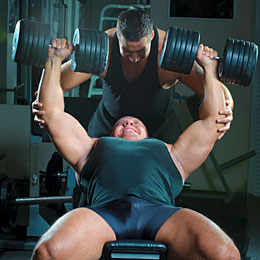 I know this is probably common sense to some people, but if possible, you should avoid heavy lifting in between your workout sessions.
I know this is probably common sense to some people, but if possible, you should avoid heavy lifting in between your workout sessions.
If you have hit your muscles hard, the minimum rest/recovery time before training the same muscle group is 48 hours. That means if you do a leg workout on Monday, don’t train the legs again on Tuesday, wait until at least Wednesday.
It might seem like more is better, but the opposite is true when it comes to muscle recovery. It is while resting that your muscles rebuild and become stronger and larger. Continuously stressing your muscles with weight forces them to tear down even further without giving them a chance to recover. Some people are eager to get back in the gym to pump some more weights, but this will only slow down your progress. As previously stated, both exercise and recovery are necessary to build muscle.
Heavy lifting applies to both workouts and day-to-day activities. Whether it’s hitting the gym or lifting heavy furniture, refrain from these activities until your muscles are ready. Try to plan your workouts so they make sense with the rest of your daily activities. For example, if you know you are helping a friend move their furniture on Saturday, DON’T train legs on Friday. If the move is intense and your legs get very sore and tired, you’ll be best off waiting until Monday to train them again. If the move ends up being lighter than you thought, you could probably get away with training your legs later on Saturday or on Sunday. The bottom line is that you need to structure your workout schedule to give your muscles a break so they can fully recover.
Eat the Right Foods to Support Muscle Recovery
 Of course, supplying your body with the right nutrition will also reduce your muscle recovery times. Limit your intake of refined sugars (small amounts of fruit sugar is okay), sodium and saturated fat. When you’re shopping at the grocery store, a good rule of thumb to follow is to stick to the outside. Here, you’ll find all of the fresh vegetables, fruit, meats and bread. The inside aisles of most grocery stores contain highly processed foods and snacks, which offer little to no nutritional value.
Of course, supplying your body with the right nutrition will also reduce your muscle recovery times. Limit your intake of refined sugars (small amounts of fruit sugar is okay), sodium and saturated fat. When you’re shopping at the grocery store, a good rule of thumb to follow is to stick to the outside. Here, you’ll find all of the fresh vegetables, fruit, meats and bread. The inside aisles of most grocery stores contain highly processed foods and snacks, which offer little to no nutritional value.
Here are some more nutrition tips to help reduce your post-workout recovery time:
- Consume adequate amounts of protein. Too much is pointless and too little will not support muscle recovery
- Fish and chicken are two excellent sources of protein
- Add more color to your meals with red peppers, squash and onions. More color often means more nutrients
- Contrary to what some may believe, carbs are your friend when you’re trying to build muscle mass. Eating adequate amounts of carbs helps shuttle protein to your muscles
- Drink milk for additional protein paired with carbs
- Avoid sugary soft drinks and energy drinks; opt for water and fruit/veggie smoothies
- Nothing beats good old-fashioned H20 when it comes to rehydrating and flushing out wastes
The key to successfully eating healthy meals day after day is to plan them out ahead of time. I recommend hanging a calender on your refrigerator and making a note stating what you’ll eat for lunch and dinner on each day. Make sure you have these necessary ingredients before writing your meals down. Having all of your meals planned out for the week will make the process easier and less time-consuming. Plan your shopping trips to take place on a day when you have enough time to really focus on the task and on prepping some of the food ahead of the time. Also, it is key that you eat BEFORE going grocery shopping. If you go to the store hungry, you will undoubtedly come home with some junk that was definitely NOT on the list.
Get a Massage to Ease Tension and Improve Blood Flow
 If your muscles are sore and aching, a light massage may offer some relief. A professional massage therapist can work out some of the tension created by an intense workout, which in turn will reduce recovery times. Increased blood flow due to massage may also help the muscles recover more quickly. It’s important to note, however, that only light to moderate massages will offer this benefit. Opting for an extended deep-tissue massage when your muscles are in the middle of their recovery process following an intense workout could have the opposite effect, actually increasing the tension and tears within your muscles.
If your muscles are sore and aching, a light massage may offer some relief. A professional massage therapist can work out some of the tension created by an intense workout, which in turn will reduce recovery times. Increased blood flow due to massage may also help the muscles recover more quickly. It’s important to note, however, that only light to moderate massages will offer this benefit. Opting for an extended deep-tissue massage when your muscles are in the middle of their recovery process following an intense workout could have the opposite effect, actually increasing the tension and tears within your muscles.
Another excellent option is to use a foam roller both before and after your workouts to improve the pliability of and blood flow to your muscles. When you do self-myofascial release with a foam roller, you are getting many of the same benefits of massage without the hefty price tag. Now if you are on a time crunch and need to shave some time off your gym visit, it is better to skip pre-workout to foam roll post-workout.
The Bottom Line
Rest is really the most important factor in recovery, so be patient. Make sure you get plenty of sleep. This is important for everyone, but especially for active people trying to build muscle. Seven hours should be the absolute minimum. Eight or even nine hours of sleep is best during times of muscle recovery. Your rest days don’t have to be sluggish and inactive. Keep moving! Stretching and walking are both great activities to support your muscle recovery. Best of luck to you in your muscle-building quest!
See Also:
Six Simple Ways To Recover Your Muscles After a Workout
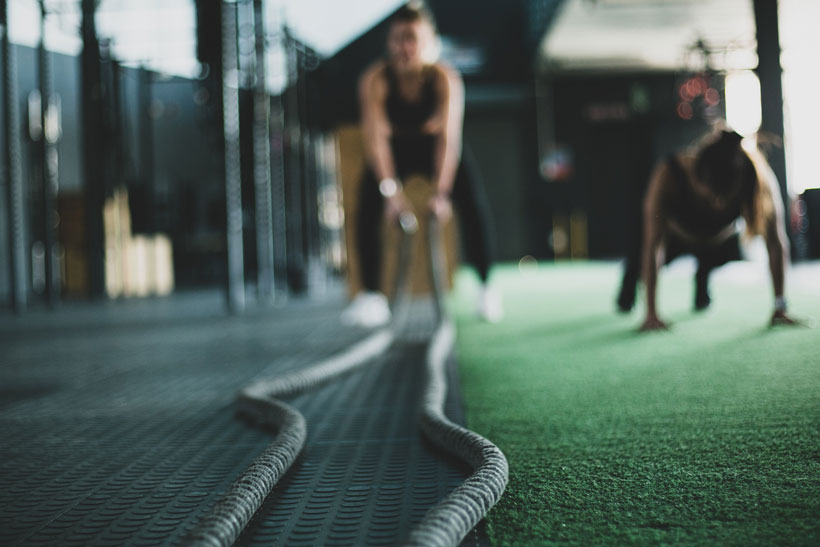 We’ve all been there many times. Getting back in shape and hitting the gym the first day after some time off makes us feel horrible the next morning when, no matter which way we move, we hurt. This often discourages us from continuing with our fitness routine or in some cases, can even have more serious health consequences. However, there are pre- and post-workout treatments to ease the pain and speed up the recovery process.
We’ve all been there many times. Getting back in shape and hitting the gym the first day after some time off makes us feel horrible the next morning when, no matter which way we move, we hurt. This often discourages us from continuing with our fitness routine or in some cases, can even have more serious health consequences. However, there are pre- and post-workout treatments to ease the pain and speed up the recovery process.
Vigorous fitness routine comes with a price, better known as the infamous muscle soreness. Although we sometimes masochistically boast about it, feeling proud of the results, most times, it’s unpleasant and hinders our fitness plan. This is why you need to read the tips below and start considering recovery as an essential part of your healthy lifestyle.
6 Tips to Help You Recover Your Muscles After a Workout
Working out doesn’t have to be a pain. While muscle soreness is good, you need to ensure that it does not impact your progress in the gym. Here are six tips to help you ease the post-workout pain to keep you moving forward.
#1. Stretch it Out
This is one of the most effective and immediate ways of both preventing and recovering sore muscles. Take 5 to 10 minutes and stretch before and after the workout. It may seem like a time-wasting and boring activity, but it’s super-important for your workout stamina and achieving desired results. If you’re fed up with basic stretching exercises, try yoga or tai chi, for both mental and physical relaxation and relief.
#2. Have an Ice-Cold Bath
Contrast water therapy has been used among athletes for some time now. Alternating hot and cold showers helps flush out waste products in the tissues by repeatedly constricting and dilating blood vessels. Contrast water therapy, besides reducing muscle soreness, is also beneficial for our skin and hair. However, another and perhaps more effective, yet more extreme, is ice bath. Jumping in a bath filled with ice immediately after a workout can stave off muscle soreness and prevent you from taking a day off at the gym. Additionally, if you fail to notice the upcoming soreness, applying ice topically will help you fight it the next day. Icing decreases inflammation and therefore makes the recovery period much shorter.
#3. Supplements
Opinions on nutritional supplements are divided, but there is literally no harm in using them. After depleting your energy stores with hour-long workout session, you need to refuel if you expect your body to recover and be ready to hit those weights again in a day or two. This is why, besides healthy recovery food, you might want to consider post-workout supplements such as protein powders and mineral magnesium tablets. They can help you achieve and maintain gym results more easily. Complete your gym bag with a couple of protein bars and a shaker bottle that you can use for all sorts of vitamin mix refreshments and nutritious shakes.
#4. Massage
There are all sort of massages that can significantly reduce muscle soreness and pain. Self-myofascial release (SMR) or, so known, self-massage, with foam rollers, massage sticks and even baseballs is very popular nowadays, and for a good reason. It proves to do wonders for many gym-goers, reducing muscle stiffness and pain, promoting circulation and a state of muscle relaxation. It can also remove scar tissues and restrictions in the fascia. However, for frequent and soreness, even at-home oil massage can do the trick!
#5. Drink Lots of Water
It feels like this can never be emphasized enough. Hydrate! And then hydrate some more. Exercising increases metabolic rate and consequently our body’s need for water and electrolytes. Besides the minimum dose of fluid intake per day, we must replenish the water we lose while vigorously working out. Dehydration delays the recovery process, so make sure you always your water bottle with you both during and after the workout.
#6. Get Some Sleep
Regular workout makes you energized and ready to take on daily challenges. However, it also requires you to take better care of your sleep and rest schedule. While we’re sleeping, our body produces growth hormone, which is largely responsible for tissue growth and repair. So, treat yourself with a good night’s sleep after a successful series of exercises and sore muscles as a result.
The Bottom Line
Whether you’re an occasional runner or a gym fanatic, muscle soreness and pain will keep happening unless we learn how to prevent it from happening or minimize the consequences. Incorporate these treatments in your weekly fitness routine for a healthy, strong, and energetic kick-off this season.
Two Guaranteed Tips to Relieve Muscle Pain and Soreness
 Our bodies are capable of doing some amazing things, things we sometimes take for granted, but that doesn’t always have to be the case.
Our bodies are capable of doing some amazing things, things we sometimes take for granted, but that doesn’t always have to be the case.
There are many things we can do to get rid of pain and soreness, but there are two specific and minimal, but effective mechanisms we can use to get us feeling great!
To improve overall quality of your life please follow these two tips.
#1. Self-Massage
 Over the years speculation about whether or not self-massage, or may you call it at-home massaging, is effective or not. Honestly, we believe it to be rather helpful, and here’s why. Professional massages can be detrimental to a person’s pockets, and while they’re the real deal, not everyone can afford a massage one to two times a month, or every week as some may participate. What happens often because of the expense, people tend to let pain in their body become some type of normality.
Over the years speculation about whether or not self-massage, or may you call it at-home massaging, is effective or not. Honestly, we believe it to be rather helpful, and here’s why. Professional massages can be detrimental to a person’s pockets, and while they’re the real deal, not everyone can afford a massage one to two times a month, or every week as some may participate. What happens often because of the expense, people tend to let pain in their body become some type of normality.
It isn’t normal to be in pain, but pain can be an informative tactic the body uses in order to let us know something is happening in our bodies, and that it needs attention called to it right away.
A self-massage can minimize pain between each massage visit, and give the added relief needed to get day-to-day tasks done. Here are a couple of self-massaging tactics to perform when you’re at home, one of which include myofascial release.
What is myofascial release and what is it used for?
To understand what myofascial release is intended to do, we must first decipher what exactly its used for. Myofascial (MPS) is a pain syndrome and it is caused by inflammation of the body’s soft tissues. Fascia refers to the connective tissues which house muscles, and when fascia is tightened, it causes discomfort and dysfunction of the muscles.
Massage Ball
One of the most underutilized tools for myofascial and pain relief is the massage ball. Aside from actually relieving pain and sore muscles, there are much deeper benefits involved when utilizing a massage ball such as improving blood flow, increasing motion range, improving the muscle’s’ performances, and decreasing fatigue after exercise.
A variety of massage roller balls exists in the market today. There are massage balls that offer deep tissue massage, and ice and heat therapy for recovery from sports and other physical activities. One key to relief from pain is applying the right strokes to sensitive points in the muscles.
Excellent places to release fascia are:
- Glutes
- Upper traps (trapezius)
- Chest
- Shoulders
- Under the feet
If you begin using the massage ball a couple of times a week, muscle soreness and pain are guaranteed to decrease.
#2. Stretching
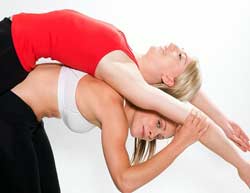 Another underutilized remedy for relieving muscle pain and soreness is stretching. When all else fails, stretch to keep the muscle healthy and flexible. Similar to using the massage ball, stretching will help to maintain range of motion within the muscles, and without periodic stretching, the muscles become shortened and tight. Stretching can seem second nature, but if you don’t know where to start, here’s a couple of stretches to begin with!
Another underutilized remedy for relieving muscle pain and soreness is stretching. When all else fails, stretch to keep the muscle healthy and flexible. Similar to using the massage ball, stretching will help to maintain range of motion within the muscles, and without periodic stretching, the muscles become shortened and tight. Stretching can seem second nature, but if you don’t know where to start, here’s a couple of stretches to begin with!
Standing hamstring stretch—stretches the neck, glutes, hamstrings and calves
- Stand up with your feet hip or shoulder distance apart, but a small bend in the knees, and bring the arms to the sides.
- As you exhale, bend forward at the hip creases, slowly lowering your head to the floor
- Try to wrap the arms around the backs of your legs
- Hold this for about 30-45 seconds
Figure Four Stretch—hips, glutes, hamstrings
- Lie flat on your back, bottom of the feet on the floor, knees bent
- Cross the left foot or shin over the right quad
- Lift the right leg from the floor. Grab onto the back of your right leg and pull toward the chest (gently)
- Hold for about 45 seconds to 2 minutes.
The Bottom Line
Stretching is a great way to keep the muscles strong, especially because it helps to eliminate any pain in the joints and reduce potential straining during workouts.
Five Ways to Maximize Muscle Recovery and Your Gains

Those within the fitness community know that in order to build muscle mass you need to lift some iron. But that is only one piece of the muscle-building formula. So what are the other pieces?
In order to allow for the body to grow, or hypertrophy, you must understand that when working out, you are effectively creating microtears in your muscle tissue. Hitting the gym too soon or too hard will not allow this process to fully integrate with healing and subsequent hypertrophy, which will undermine your good gains. So basically, lifting too much too often of the same area with little rest will not get you big.
1. Feed Your Muscles
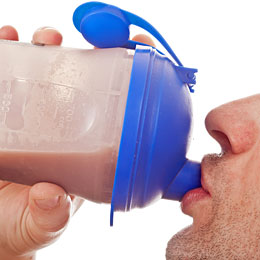 In order for your body to heal and repair the various microtraumas that are brought on by exercise, you need to balance this by consuming adequate fuel, post-workout. Not only will this help normalize energy levels, but it also feeds and promotes healing to the muscles.
In order for your body to heal and repair the various microtraumas that are brought on by exercise, you need to balance this by consuming adequate fuel, post-workout. Not only will this help normalize energy levels, but it also feeds and promotes healing to the muscles.
This is accomplished most easily through a protein shake, mixed with some carbohydrates, or a meal, which should lean more in favor of protein over carbs (this can change depending on training).
2. Self-Rehab
 Every athlete should have a health care team behind them. This ensures you know where to go before your body breaks down—so listen to what your body is telling you!
Every athlete should have a health care team behind them. This ensures you know where to go before your body breaks down—so listen to what your body is telling you!
Foam rolling is an entry-level way to assist in breaking up scar tissue and muscular adhesions brought on through lifting. The benefits include decreased muscular soreness and improved range of motion. Depending on what your workout will be for the day, you may need to roll out and stretch areas that need mobility for a better quality workout.
If foam rolling isn’t keeping up with your workout regimen, then you may need to go up the health care ladder. Massage therapists are great because they get to the deep areas that are often too painful to do on your own.
3. Sleep
 Our bodies are fantastic machines. While you sleep, your body releases natural human growth hormones (HGH) which are like the midnight road repair guys who work on the interstate (Learn more about the benefits of HGH). When the traffic is low, they can get a heck of a lot done. Similarly, achieving a quality, uninterrupted night’s sleep will promote accelerated healing and muscle repair.
Our bodies are fantastic machines. While you sleep, your body releases natural human growth hormones (HGH) which are like the midnight road repair guys who work on the interstate (Learn more about the benefits of HGH). When the traffic is low, they can get a heck of a lot done. Similarly, achieving a quality, uninterrupted night’s sleep will promote accelerated healing and muscle repair.
Consequences of poor sleep (i.e. less than 7-8 hours / night) include fatigue, reduced healing, and poor performance at the gym which will slow down your gains making you have to work even harder.
4. Ice
 One consequence of a rigorous workout plan or a heavy lift day can result in delayed-onset muscle soreness, or DOMS. This is the dull, achy pain you experience usually 24-48 hours post-workout. To offset the discomfort, taking an ice bath (or water quite cold) by immersing yourself for 5-12 minutes will do the trick by taking the edge off.
One consequence of a rigorous workout plan or a heavy lift day can result in delayed-onset muscle soreness, or DOMS. This is the dull, achy pain you experience usually 24-48 hours post-workout. To offset the discomfort, taking an ice bath (or water quite cold) by immersing yourself for 5-12 minutes will do the trick by taking the edge off.
A back-up to this more intense regimen can be using an ice pack on the affected area. A good rule of thumb is 10-15 minutes on every hour for 1-2 hours.
5. (Bonus!) Magnesium
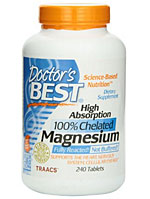 It is not always easy to get all your macronutrient needs met throughout the day through traditional food sources, no matter how well-intentioned. Tacking on training and workouts places higher demands on your body which must be satisfied with increased intake of foods.
It is not always easy to get all your macronutrient needs met throughout the day through traditional food sources, no matter how well-intentioned. Tacking on training and workouts places higher demands on your body which must be satisfied with increased intake of foods.
So why is magnesium important? Magnesium is a co-factor in the energy converting process that helps run our bodies (ATP à ADP + P + 2Mg, for you science guys). When we work out, we utilize a lot of energy to lift weight and move about. Your body normally has adequate supplies, but deficiencies arise, such as those experienced after a workout – meaning your body has nearly exhausted its supply and is craving more.
Satisfying this craving will reduce DOMS by preventing your body from stealing magnesium from other sources in order to help in the muscle repairing process. The best way to get adequate levels of magnesium are through reputable sources of magnesium (food or supplemental form).
The Bottom Line
Those who get the best results are those who are dedicated, determined and listen to their bodies. Feeding your muscles, getting body work done, proper sleep, stretching, foam rolling, icing and taking magnesium will not only maintain your mass, but accelerate good gains – all while reducing muscle soreness. The recipe for protecting your gains has never been easier.
See also:
- Want to decrease muscle soreness after working out? This post is for you.
- This blog post covers just about everything you need-to-know about foam rolling.
Five Remedies You Should Know for Post-Workout Pains
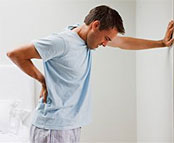 Workout pain is inevitable, especially if you regularly perform rigorous cardio or strength training activities. Pain typically manifests as a result of overstraining your muscles or tissues, but sometimes more severe pain will show up due to an injury incurred while working out.
Workout pain is inevitable, especially if you regularly perform rigorous cardio or strength training activities. Pain typically manifests as a result of overstraining your muscles or tissues, but sometimes more severe pain will show up due to an injury incurred while working out.
Depending on the severity of your case, the remedy to post-workout pains is not necessarily stopping altogether, what many people tend to do, but instead utilizing various remedies to soothe the soreness so you can more quickly get back into the flow of things.
If your injury is severe, the remedies discussed here may not be adequate on their own and stopping physical activity for a bit may be required. Listen to your body, and if necessary, go see your doctor for a more in-depth treatment plan.
5 Simple Remedies for Workout & Post-Workout Pain
The following are five proven remedies that you can use to relieve post-workout pains. You can utilize these tips to get back into the gym to stay on track towards your fitness goals. So without further ado, let’s dive in.
#1. Eat Well
The foods that we eat play a significant role in the development of the body muscles and they can also be used for repairing damaged tissues. Protein is highly recommended for healing and restoring body tissues. On the other hand, you need food groups like carbohydrates to provide fat and energy that helps to improve the healing and even give you the strength in the body. Fruits and vegetables provide you with the body nutrients such as iron, magnesium, and vitamins which are crucial for improving the health in the body.
Immediately after your workout, eat a plate that has all these food groups. Research shows that the body is estimated to have about 2 hours to absorb all the energy and nutrients it needs for repair and strengthening the muscles. So, eating in between the two hours will help the body to absorb all these nutrients for quick healing.
#2. Stay Hydrated
Aside from drinking water while working out, it is vital that you continue to take water even after your workout sessions are done. Workouts cause the muscles to break down for them to rebuild and become stronger. Water works by lubricating the muscle joints hence enabling free and fast transfer of nutrients to the bones and the muscle tissue for divine healing. It also helps in the digestion process whereby it fastens the breakdown of food and the transmission of the nutrients in the body.
So, on your recovering process, the water helps the food to be digested fast such that your body gets the required energy and nutrients to keep it going and energetic. Water quickens the process of protein-synthesis essential for the muscle rebuilding process. So, to ensure that the broken muscles are growing as expected, water helps to quickly transfer the required proteins to the individual muscles for healing.
#3. Utilize Compression
Compression has been advocated for those who are involved in vigorous training and workouts, and this also led to the invention of compression gear. You don’t necessarily have to wear compression gear for healing purposes since some exercises can also help you achieve your muscle healing. What is compression and does it assist in healing after the workout? Compressions are measures taken to ensure the stability of the body muscles by eliminating the fluids which facilitate pains, fatigue, and soreness on the muscles.
The compression tactics also assist in providing there is good blood flow, and there are no fluids which are retained on the muscles as a result of workouts. Some of the compressions that help to heal the tissues include; massage and rollers. If you train occasionally, you can schedule for a massage session maybe twice or thrice a month while rollers can significantly help you if you are involved in vigorous workouts.
#4. Try Healing Ointments
There are different medical creams which are manufactured for the healing of the body muscles. These ointments work by providing a relieving effect on the body and the nerves. The good things about the ointments such as magnesium oils topical CBD and the tiger balm are that they are all made using natural organic plants which are proven to have some medical history in relieving pains. The compounds are applied on the skin in a massaging form to ensure that the effect penetrates to the body muscles and the tissues.
In return, they provide a cooling and calming effect on the weak muscles. Before applying any of these compounds, it is crucial that you consult a physician or even your trainer on the number of times to implement it or even how to apply it. This is because the doctor may advise you on how to do your workouts or what to avoid when doing your exercises to reduce the soreness or the need to use the ointments all the time.
#5. Increase Blood Flow
As long your blood flow is normalized after workouts, then one is able to heal and even reduce the pains as well comfortably. The fatigue and soreness that occurs on the body muscles hinder the blood from flowing well. So, one way to prevent this and ensure the excellent flow of the blood, one needs to wear compression outfits. The outfits help to reduce the fatigue by eliminating the fatigue fluids from forming on the muscles.
Aside from using the compression gear, you can also invest in other activities such as walking or cycling. Take a 30 slow walk in your neighborhood and ensure to stretch all the body joints as well. You can even take a ride around your area to relax the feet muscles. The critical point to note in these exercises is that they should not be strenuous for your body.
In Conclusion
No matter how fab you are in the fitness world, your body will likely at some point succumb to pain or even injury when working out. But instead of stopping what you love doing or forcing yourself to change your workout routine, basic self-care and remedies can help to relieve your workout pain and quickly get you back into the game.
The above tips are five proven ways to help you heal the post-workout stress. Overworking your body can result in pain and injury which can sometimes be difficult to recover from. So, study your body and when you feel like you absolutely cannot go on, stop and take a rest.
Ten Ways to Remedy Muscular Pain Without Medication
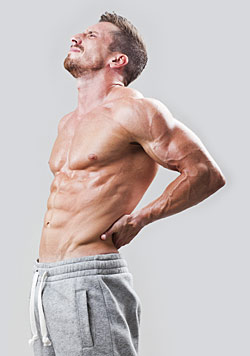
If someone is in chronic pain, their immediate reaction is seeking some pain medication. This usually only offers temporary relief and is not going to be a permanent solution.
There are many solutions available to help with pain management without using medication and risking harmful effects. There are multiple ways to avoid the pain and employ natural remedies.
Fatigue and pain can be normal after exercise, but if there are sustained symptoms, it could be indicative of a more serious condition.
However, there is a lot available to help keep you healthy and pain-free in a natural. Keep reading to find more ideas.
#1. Massage
Helping muscles relax is key to any recovery. Massage can be one technique that eases chronic pain. It is something you can do on your own or have a friend or family member help with.
#2. Acupuncture
This ancient Chinese practice helps those overcome pain using tiny needles placed at certain points on the body. A trained professional must do it, as it is a very precise science.
#3. Stretching
This is perhaps the most versatile form of reducing pain as it can be done anywhere—home, office, and gym. It will reduce pain from being in the same position for extended periods of time and also from intense exercise. Stretching does not help muscles that are very injured however so be careful with this. Stretches can be done in all ways in order
#4. Apply Ice
Ice will reduce inflammation in muscles if they are injured. For this to be an effective technique, the application should begin immediately after the pain begins. Wrap the ice to avoid burning or damaging skin and keep it on the sore spot for 10 or 15 minutes. Cold baths or showers are another alternative. This therapy helps slow blood flow to painful joints. Swelling will be reduced and your nerves are not able to quickly send their messages that your body is in pain. Applying a cold pack, wrap, or ice can help ease painful flaring joint pain.
#5. Physical Therapy
One highly-utilized way to manage pain without opioids is to use physical therapy. Gently moving and stretching your muscles can help to treat underlying sources or conditions. It actually will strengthen and correct the source of pain, unlike medication, which will just treat the symptoms. It also included regularly exercising in order to effectively manage pain and its symptoms.
#6. Apply Heat
If the ice does not work, try an opposite technique and apply heat either through a pad or by a hot bath or shower. Epsom salts help alleviate pain also as they contain magnesium which is a natural relaxant. Steam baths and work like a sauna to release tension, muscular pain, and also rid the body of toxins as well. Heat therapy will boost your circulation and allow you to relax. It can also help to soothe your mind and soul.
#7. Hydrate
Staying hydrated is the key to staying healthy at any time, but especially after working out or exerting yourself. It will help decrease inflammation and keep you from being sore. Water is your best bet, but hydrating electrolyte drinks can also aid your recovery.
#8. Walk it Off
Being active in your recuperation can be an excellent way of coping with your muscle pain, as it will avoid sedentary action. If muscles are sore, try to walk more. It doesn’t have to be miles, just a little further than normal. Rotate your shoulders as you walk, or move your arms and stretch your neck from one side to another. This allows you to feel more relief.
#9. Bromelain
Bromelain is the enzyme found in pineapples and can have anti-inflammatory properties. It is available in supplements and can be purchased online or in health food stores. Similarly, cherries or their juice have been shown to have anti-inflammatory properties and are able to reduce inflammation. This enzyme is particularly beneficial in combating muscular pain.
#10. Rest
Resting is the best way for the body to repair and also to recover. It allows you time to recharge mentally and physically. Resting can be the way to take that time out your muscles need after the big workout. A short break such as this can give that time to heal which your muscles really need.
The Bottom Line
Living with chronic pain does not have to be an issue; neither does relying on bottles of pills for your entire life. There are many possibilities of pain management to choose from without going to the pharmacy.
There is sure to be a method that is possible to control all of your pain. Anxiety, depression, and stress can all aggravate your chronic pain, but it’s very important to address the emotional side of pain in your life. These can be addressed through learning to manage thoughts or feelings as well as the physical response you have to them.
Types of Cold Therapy (And How They Could Help You)

One of the handiest items you might incorporate into your post-workout routine is an ice pack. Whether it’s to alleviate muscle soreness, treat a minor fitness injury, or speed up muscle recovery, cold therapy plays an important role in the athletic world, and for good reason.
How Does Cold Therapy Work?
During an intense workout, muscle fibers (or more specifically, the myofibrils that makeup muscle tissue) actually shred, incurring microtrauma that the body then goes about repairing.
The body’s innate immune response is to stimulate a release of chemicals including prostaglandins, bradykinin, and histamine that trigger affected tissues to leak fluid and white blood cells and other nutrients to flood the tissue and initiate the repair process.
Intense physical activity also cues your body to use up its stores of glucose and adenosine triphosphate (ATP) to provide energy to your muscles as you work out.
When those run up, your oxygen-starved muscles produce lactic acid and you see the swelling and inflammation that is often later associated with delayed-onset muscle soreness, or DOMS.
Administering cold therapy after a workout by icing swollen muscles is believed to help reduce this type of pain as well as speed up recovery in a few ways.
- Cold shock constricts blood vessels and cuts off the flow of blood and other fluids to swollen muscles. This reduces inflammation and may help prevent added damage to blood vessels (in the case of an injury like a sprained ankle). Less swelling means less pressure on the tissues and diminished stretching of the skin.
- Application of an ice pack also numbs the affected area, offering an analgesic or pain-relieving effect. Nerve endings may spasm from the excessive stimulation of the muscles with intense physical activity and the cold from an ice pack can slow their conductivity and reduce the number and frequency of pain signals being sent back to the brain.
- Icing a muscle or joint and then removing the cold pack after 10 or 20 minutes leads to rapid contraction (widening) of blood vessels helping to flush out built-up lactic acid and other by-products in the muscles that inhibit repair and cause soreness later.
Types of Cold Therapy
Effective and essentially free, cold therapy (or cryotherapy) is accessible via many methods including:
Ice Pack
Adaptable for varied cold therapy needs like a sore lower back, knee pain, or simply cooling off after a workout, ice packs are possibly the most versatile cold therapy tool. If you don’t have an ice pack handy, consider instead using a bag of frozen vegetables, a sponge or towel you intentionally pre-soaked and froze, or a bag or cloth napkin with ice cubes in it. You can also buy disposable ice packs that are engineered for one-time use and simply involve a chemical reaction (often induced by vigorous shaking) to turn cold.
Cold Water Immersion
As a person interested in fitness, you have likely seen athletes soaking in cold ice baths following an intense game. A 2015 meta-analysis in the journal PLOS One pooled data from 27 different studies and found that cold water immersion affected the symptoms of DOMS significantly. Talk to your doctor before trying this cold therapy method though to avoid injury or lowering your body temperature too far.
Whole Body Cryotherapy
This more extreme cold therapy typically involves spending 2 minutes in a temperature-controlled cryo-chamber where the body is exposed to very cold air (between -110° C and -140° C). While some research has shown positive effects of this type of cold stimulation in facilitating an athlete’s recovery, it is still recommended that athletes approach this solution with input from a sports medicine specialist and trained and licensed cryotherapy administrator.
Ice Massage
With a large ice cube, rub your sore muscle (or ask someone to do it for you) in circular motions for up to 5 minutes at a time. The cooling sensation coupled with the light massage of the musculoskeletal tissues can help relieve pain and inflammation. Just avoid massaging directly over bony points like the spine.
Frozen Foam Rolling
Foam rolling continues to be a popular trend in post-workout recovery as it kneads tight myofascial tissue and helps to break up scar tissue and boost circulation. Water-resistant foam rollers, however, also feature cold therapy potential, allowing you to freeze them and use for both myofascial release as well as cold stimulation.
The Bottom Line
Cryotherapy plays an important role outside the fitness world as well, assisting doctors with surgery, helping people treat injuries, even improving symptoms associated with some skin disorders like cysts, warts, and lesions.
How Endurance Training Can Help Your Sore Muscles
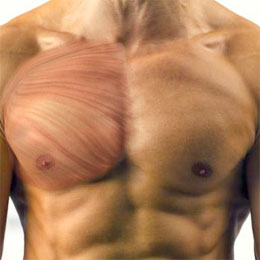 Have you ever felt that your entire body is paining and although it’s not such an intense pain that you can’t function, but definitely something for which you might just want to call in a day off and take a long nap?
Have you ever felt that your entire body is paining and although it’s not such an intense pain that you can’t function, but definitely something for which you might just want to call in a day off and take a long nap?
Chances are that you might be suffering from sore muscles from exercising. Thankfully, it’s a common condition that isn’t excruciatingly painful, though, it certainly can be quite annoying.
What causes sore muscles?
Imagine your muscle to be a machine. With regular use, overuse misuse or due to some kind of rough handling, machine parts can get worn.
Similarly, our muscles can get worn due to any kind of strain, trauma, wrong position, exhaustion etc. leading to sore and inflamed muscles. Muscle inflammation, also known as myositis, can be caused by various factors such as trauma, injury, infection or several chronic diseases.
However, there are also specific forms of myositis[1] such as polymyositis and dermatomyositis which are caused when the body’s immune system, owing to some sort of internal malfunction refuses to recognise the body’s muscles as an internal system and turns against them, mistaking it for a foreign body, thus damaging the muscle tissues in the process.
Although there is no specific medication for this condition, but endurance training help you with your sore muscles.
What is Endurance Training?
Endurance training is a series of exercises that are aimed to build strength and endurance. It consists of a set of work out plan which aims at the problem areas specifically, thereby offering spot effectiveness of solution.
Endurance training is known to refer to training the aerobic system of the body instead of only the anaerobic system.
It improves skill, and These are specifically designed in order to help people build this body in such a manner that it improves endurance and power.
It improves the MicroRNAs
Research[2] has found “Endurance exercise altered 39 microRNAs. The microRNAs with increased expression were predicted to target transcripts involved in inflammatory processes, metabolism, and muscle atrophy.”
Endurance exercises are particularly helpful in altering the microRNAs which are known to target and lower the immune processes, as well as by helping to decrease the other microRNAs which target and increase mitochondrial content at the protein level.
It is also instrumental in the creation of microRNA affecting the number of immune cells which are known to attack the body’s muscle. Thus, it improves the overall situation of the muscles and helps in the healing of the muscle by the process of increase of aerobic metabolism via mitochondrial biogenesis.
It increases muscle strength
Endurance training is generally aimed at building endurance, speed, and power; hence it helps build muscle mass and strength. As your muscles become stronger, its endurance of strength improves, and your muscles don’t get sore as easily. With regular exercise people who are prone to sore muscles can benefit immensely.
If the pain and discomfort is too bad, it is important to see a doctor immediately to rule out any other conditions.
In order to strengthen weak muscles, it is important to follow a healthy diet and take supplements such as Jintropin[3] which provide strength to weak muscle and add mass.
Sore muscles can be painful but with care, it can be handled effectively
References:
- MedlinePlus – Myositis | Polymyositis | Dermatomyositis
- Journals.plos.org – Effect of endurance exercise on microRNAs in myositis skeletal muscle—A randomized controlled study
- Pharmacer.com – Jintropin®
Utilizing Physiotherapy to Help Heal Chronic Muscle Soreness
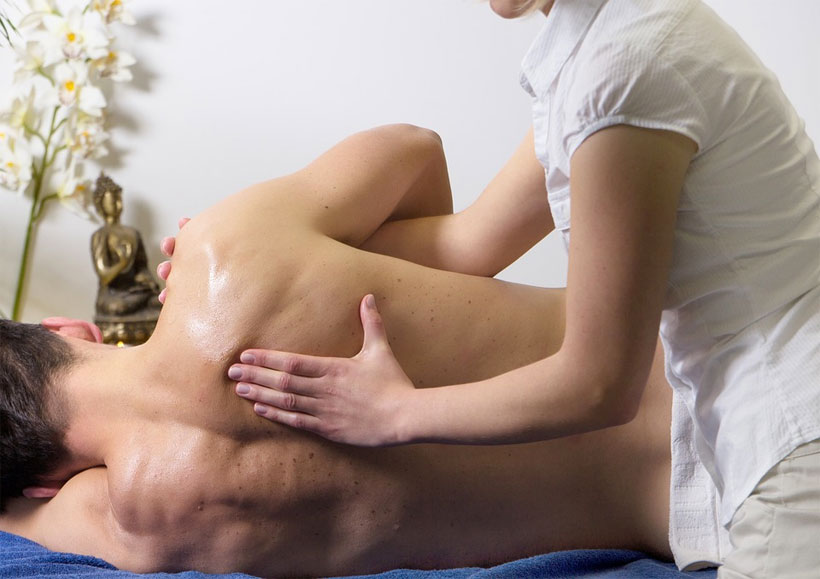 Unbeknown to most people, physiotherapy isn’t just something for sports injuries and back problems. Physiotherapy is used to treat a wide variety of issues including sports and other injuries, sickness, and various disorders.
Unbeknown to most people, physiotherapy isn’t just something for sports injuries and back problems. Physiotherapy is used to treat a wide variety of issues including sports and other injuries, sickness, and various disorders.
When done right, physiotherapy can treat many different problems that arise from injuries, aging or even illness. Physiotherapy also utilizes treatments like massage, exercise, and manipulation over surgery or medication.
This can all be done because of highly skilled and well-trained physiotherapists who administer a great variety of treatments to relieve pain, restore body function, and help lessen the effects of dysfunctions from permanent injury or disease.
What is a Physiotherapist?
The first step to understanding physiotherapy is to understand exactly what a physiotherapist is. In a nutshell, a physiotherapist is a person qualified to treat injury, disease, or deformity by physical methods such as heat treatment, exercise, and massage.
These professionals have trained and studied for endless hours to be able to administer the treatments they do. In Australia, for example, all physiotherapists are required to register with the Physiotherapy Board of Australia, and also need be in accordance with the data released by the board.
Physiotherapists can be found everywhere from hospitals to schools, to sports clubs. A physiotherapist will most probably be present at one of these facilities. The job of a physiotherapist can vary from day to day too. For example, on Monday a physiotherapist may assess a physical condition and help a patient by creating a treatment plan for them, and the next he or she may be re-teaching someone how to walk.
Physiotherapists are incredibly skilled individuals who are nothing short of experts in their field.
Types of Physiotherapy
Since physiotherapy can treat numerous conditions, there are different fields of physiotherapy for different kinds of conditions. These three fields are musculoskeletal, neurological, and cardiothoracic.
Musculoskeletal Physiotherapy
Musculoskeletal physiotherapy is a field that deals with arthritis, sprains, strains, back pain and the like. Most injuries that involve muscles can be treated with musculoskeletal physiotherapy, and also rehabilitation after surgery.
Neurological Physiotherapy
Neurological physiotherapy, on the other hand, is used to treat disorders in the nervous system. This physiotherapy can be used to treat Parkinson’s disease, spinal cord injuries, and even acquired brain injuries.
Cardiothoracic Physiotherapy
The last type of physiotherapy is cardiothoracic physiotherapy, this deals with cardio-respiratory disorders such as asthma, chronic bronchitis, and other cardio-respiratory issues.
Things to Consider Before Booking a Session
While physiotherapy is a very effective treatment, there are still some things to consider before booking an appointment.
Pricing
The first thing most people will want to consider before booking a physiotherapy appointment is the price. In a perfect world we’d all simply just book the most qualified and highest rated therapist for the job, however, the money factor is a big one for the majority of us. Therefore, it is important that the clinic where you’re booking therapy has a convenient pricing plan that works with your budget, or better yet, they accept your insurance plan which hopefully covers everything!
The Physiotherapist
The next thing to consider (should ideally be the first!) is your physiotherapist. Always look for a licensed therapist, there are numerous dangers with an unlicensed physiotherapist, which we don’t dive into here. But instead of painstakingly looking through advertisements and websites for details about physiotherapy, you can just book your sessions through a health group such as Performax Health Group, where there are clear pricing plans and licensed professionals to administer treatment.
The Bottom Line
There are numerous reasons to opt for physiotherapy rather than surgery or constant medication, especially when the right precautions are taken. When done right and when used for the right reasons, physiotherapy can treat many ailments successfully.
Physiotherapists are very specific with their treatments, as each injury is unique. Because of this, there is a wide range of therapies that can be administered to a patient. From exercise programs, strengthening muscles to manual manipulation, all the way to various electrotherapy techniques, there are many types available.
Just remember that physiotherapy is unique for everyone, as there are so many variables involved when it comes to injury. But the bottom line is this, the benefits of physiotherapy are endless, and when done right, physiotherapy works wonders!
Three Tips for Loosening Up Tight Trapezius Muscles
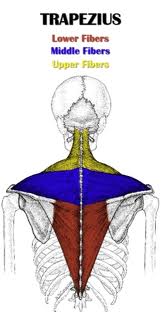 Tight trapezius muscles (the muscles between the neck and shoulders) are a common complaint among all adults.
Tight trapezius muscles (the muscles between the neck and shoulders) are a common complaint among all adults.
Office workers often complain of a sore neck and tight trapezius muscles (also known as traps), but active adults are even more prone to pain and tightness, especially those who spend a lot of time lifting weights or participating in sports like cycling.
When tight traps go untreated for too long, they can cause pain in the neck, shoulders, and upper back. When they’re tight and overactive, you might also end up relying on them more when you’re performing daily activities or lifting weights in the gym.
If you struggle with tight traps and upper back pain, these three tips can help you loosen them up and improve your posture and lifting technique for good.
1. Perform Gentle Stretches Throughout the Day
There’s a lot of truth to the adage “an ounce of prevention is worth a pound of cure.” Instead of waiting until the end of the day, when your trapezius muscles are more likely to be tight and sore, it’s more effective to perform stretches throughout the day to keep them loose and relaxed.
Some of the best stretching exercises for tight traps are listed below:
Forward Neck Stretch
Start by sitting or standing up straight. Then, clasp your hands behind your head and gently pull your head forward, bringing your chin down toward your chest. Don’t push on your head with your hands — they’re just there to add a little extra weight. Hold this position for 10-15 seconds, then release.
Side Neck Stretch
Start by sitting or standing up straight again. Then, reach over your head and place your right hand on the left side of the head, just above your ear. Reach your left hand out to the side to deepen the stretch as you gently pull the right ear toward the right shoulder. Hold for 10-15 seconds, then switch sides.
2. Give Yourself a Massage
In addition to stretching, massage is one of the best things you can do to relieve tight trapezius muscles and prevent upper back and neck pain.
Of course, it would be great if you had the time and money to spend on a professional massage. But, if this isn’t feasible for you, don’t worry. You can still reap the benefits of massage at home with the help of a tennis or lacrosse ball.
Lean against a wall and place the ball between the wall and your traps. Lean against the ball and slowly roll up and down, stopping and pressing down when you reach a tender spot. Hold for about thirty seconds, or until you feel tension start to release. Repeat for as long as you like until you feel as though all the tense spots in your traps have loosened up.
3. Perform Scapular Stabilization Exercises
After you’ve stretched your traps and worked out tension, you’ll need to work on strengthening them to correct the poor movement patterns that contribute to your upper back pain.
Scapular stabilization exercises are some of the best for preventing tension in the neck and trapezius muscles. Some of the best ones to include in your routine are listed below:
90-90 Shoulder Rotation
Stand up straight against a wall with your arms extend to the sides in a “T” shape. Bend your elbows so that one hand is pointing up toward the ceiling and the other is pointing down toward the ground — both should form 90-degree angles.
Slowly rotate your arms to switch positions. Keep your shoulder blades and the back of your head glued to the wall for the whole exercise.
Scapular Step-ups
Find an object like a step or yoga block that is about 3-4 inches off the ground. Make sure it’s wide enough for you to place both your hands on it while you’re in a plank position.
Once you’re set up properly, open your feet to slightly wider than hip-distance. Slowly lower your right arm off the step to touch the ground. Then, pull your arm back up, keeping it straight and allowing the shoulder to do the work. Repeat 5 reps on each side.
The Bottom Line
If you struggle with tight traps and upper back pain, these three tips can help you loosen them up and improve your posture and lifting technique for good. The key with any corrective stretching/exercise routine will be consistency, so start today and utilize these exercises daily for the best results.
Three Ways Massaging Sore Muscles Improves Your Workouts
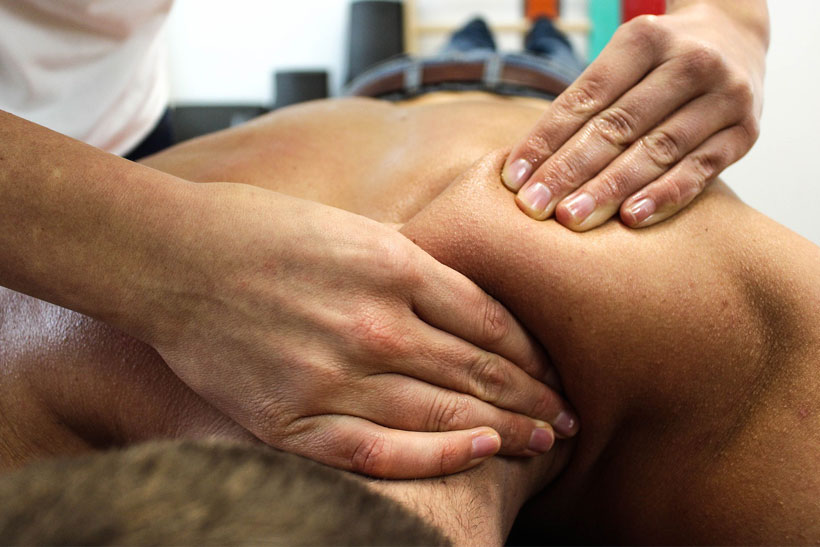 When you’re sore, you don’t even want to move, let alone workout! Here’s why you should get a massage after hitting the gym.
When you’re sore, you don’t even want to move, let alone workout! Here’s why you should get a massage after hitting the gym.
When there is soreness in our muscles and joints after working out, it can cause us to lose the motivation to keep exercising. There tends to be discomfort around 24 to 48 hours after a workout session.
This is known as delayed onset muscle soreness (DOMS). Sometimes, these unpleasant aches and pains can last for longer than anticipated and may even hinder your daily routine.
For most of us, massaging sore muscles means going to a professional. However, there are ways to massage after a workout, and you can totally do these at home.
Top 3 Reasons to Get a Post-workout Massage
Let’s explore why massaging your muscles after a workout improves your health!
#1. Reduces Inflammation
After a long, intense workout, you’re probably feeling pumped and closer to your personal fitness goals. That is until you notice pain and soreness all over your body. This is something that every person that exercises go through. This is especially true for those who have not worked out in a while. Intense workouts may cause microscopic tears throughout your muscle fiber. This leaves the majority of us extra sore and in pain. Experts in massaging sore muscles, particularly after a workout, will not only help you feel good but will reduce inflammation. A massage after workout causes the production of inflammatory cytokines, which help reduce pain. This works similarly to over the counter anti-inflammatory drugs such as NSAIDs.
A deep tissue massage, for example, can also help increase your muscular strength. Fatigue is one of the most common reasons people are not exercising. But after massaging sore muscles comes reduced inflammation and ultimately, an increase in muscular strength. You would need to make sure that you are staying true to your fitness goals and including a massage session in your routine is one of them. The timing and method of the massage you choose are also vital to tapping into its benefits. In this case, it’s highly recommended to use a masseur.
#2. Protects Against Injury
Every time you exercise, you are at risk for injuries such as pulled muscles or shin splints. A post-workout massage has anti-inflammatory qualities but also protects against other injuries. A massage after a workout is very beneficial if you ever find yourself in this situation. If you choose to get a massage from a professional massage specialist after your workouts, you reduce the chances of any exercise-related injuries. Professionals in the massage industry achieve this by manipulating our muscles and surrounding tissue to make them less prone to injury. This also has an additional benefit of protecting your muscles and promoting better performance.
You can also expect a reduction in your muscle tension after massaging sore muscles. This usually leads to mild to intense pains and can vary from person to person. After exercise, our muscles become strained and tight but if you still experience these issues post-workout, it’s due to muscle tension. Muscle tension can go away after a few days but when soreness persists, it’s usually due to added muscle tension. This is something that can also lead to other injuries down the line. Luckily, you can speed up recovery by massaging sore muscles after an intense workout. Massage therapists can work to lessen muscle tension and reduce pressure on muscles to decrease the likelihood of spasms and injuries.
#3. Improves Circulation
A great benefit of getting a massage after a workout is improving circulation in your body. Many post-workout injuries are caused by poor circulation throughout your body. When your muscles are running on overdrive, it needs as much oxygen and nutrients as possible to reduce the risks of muscle tears and strains. Different post-workout massage techniques can help improve circulation by facilitating blood flow throughout congested areas. This release of pressure from massaging sore muscles results in blood-rich oxygen loaded with nutrients to flow in. This helps to improve blood pressure, overall body function and any other details about your tense muscles.
Tips to Get the Most Out of Massage
The options and opportunities are endless for massaging sore muscles, relieving tension in your joints, and relieving pain in your muscles. Whether you go to a professional or work on massages at home, you should prioritize this before your next workout session.
A good massage after a workout can reduce inflammation significantly after only a few sessions. You could also get another massage as early as a couple of days after your first one. You’ll notice a difference in how your body circulates blood and regulates the rest of your body.
It’s still recommended that you wait up to five days between working out to massage sore muscles. Drinking lots of water helps and stretching right before and after a workout can help to encourage your recovery. Remember that doubling up on massages will not necessarily decrease soreness faster but will still make a great difference.
Prevent future injuries by scheduling a massage after your workouts. Even scheduling a second massage a week after the first is also a beneficial practice to have.
The Bottom Line
Post-workout massages are especially beneficial when administered by professionals, though you can apply these tips to your own massage practices.
Massages are typically considered part of both complementary and alternative medicine. This is why you should incorporate a post-workout massage into your fitness routine to help you both enjoy and stick to your exercise regime.
Any of these tips should help with your decision to better your health and keep you on track with your fitness goals! Don’t forget to bookmark our site to never miss any of our latest posts!
Six Ways Massage Helps to Heal Sore Muscles
 Sore muscles can commonly occur due to strenuous activity that is performed or due to an injury. For many people, it can be challenging to perform daily activities or exercises when muscles are strained and sore.
Sore muscles can commonly occur due to strenuous activity that is performed or due to an injury. For many people, it can be challenging to perform daily activities or exercises when muscles are strained and sore.
If you want to alleviate the discomfort or pain, there are a few ways that massage can help to ease sore muscles of your body.
#1. Alleviate Inflammation
According to well.blog.nytimes.com, massage can reduce the number of compounds called cytokines, which plays a critical role in inflammation.
It can cause a suppression in pathways in inflammation and increases in mitochondrial biogenesis, which allows the muscles to have the ability to adapt to more exercise.
Massage not only alleviates the discomfort but can also enhance cell recovery to ensure that inflammation is treated naturally for faster pain relief.
#2. Help Muscles Recover
Although many people rely on taking a pain reliever if they experience discomfort, the medicine doesn’t assist the muscle with healing.
With massage, it can help sore muscles recover and can help muscles to become fitter faster. After analyzing the tissue, studies show that massaging muscles turns on genes that reduce inflammation and activate genes that promote mitochondria. Muscles that are more fit tend to have more mitochondria.
Massage works similarly to pain medication but doesn’t come with the side effects and is considered to be a safer and more effective alternative.
#3. Boost Muscle Fitness
Exercise that is combined with massages that are performed frequently enhances the pathways. Although many people have resorted to using ice baths, they have shown to have a downside because they can prevent muscle growth and repair from occurring.
Rubbed muscle tissue can develop more strength compared to muscle that isn’t massaged and can also lead to less swelling.
#4. Increasing Blood Flow
Repeatedly massaging sore muscles can increase blood flow and will also reduce lactate levels, which can delay muscle recovery. Too much blood lactate can sit in the muscles and accumulate when the muscles aren’t massaged, which can prolong soreness that the individual experiences and can cause it to take longer to heal and experience physical relief.
Massages are also known to support lymph function, which can allow newly oxygenated blood to be delivered to tender areas on the body. The oxygenated blood can even flush out toxic waste that is contributing to soreness for quicker relief.
#5. Reduce Delayed Muscle Soreness
Massage is also considered to be effective in reducing delayed muscle soreness when it’s administered two to six hours after intense exercise is performed. Athletes can have better flexibility and mobility by undergoing a massage on specific areas of the body that are prone to becoming strained, depending on the type of exercises or movements that they performed.
Most people experience immediate relief with their sore after undergoing a massage, but it’s also common to feel tender in certain areas where there are aches and pains. Some areas that are considered to be trigger-points will need to be repeatedly reworked over time to experience relief, but each massage that is performed can contribute to improved well-being.
In many cases, deep tissue massage can also be more effective than physical therapy, acupuncture, diet, chiropractic, and taking glucosamine by obtaining an improved range of motion. Undergoing a deep tissue massage shouldn’t hurt when it’s performed by a professional, but it may be uncomfortable initially in the areas where your body is sore.
#6. Improve Flexibility
Sore muscles can make it easy to feel stiff and have a lack of mobility, but with a massage, it’s possible to improve flexibility by loosening the muscles and allowing them to relax.
Massages stretch the muscle fibers to promote and maintain flexibility when frequent motions are performed.
Muscle tension is released within seconds, especially in areas where there are disturbances of collagen scar tissue and the development of various adhesions are present.
The Bottom Line
According to 10Machines.com, the best massage chairs can help you alleviate back pain and sooth sore muscles. See ten great massage chairs reviewed here: https://www.10machines.com/best-massage-chairs-reviews/
Massaging sore muscles is proven to be extremely useful in rebuilding the tissue and alleviating the discomforts that one experiences. With routine massage, athletes and individuals who are physically active can obtain relief and boost their performance without forming dependencies on pain medication.
If you live a very active lifestyle you really can’t go wrong with a regular massage from a licensed massage therapist. That said, a massage chair is a great investment and compliment to regular sessions with a professional. This way you can maintain your body regularly in the comfort of your own home without breaking the bank.
Seven Ways A Massage Chair Will Improve Your Athletic Performance
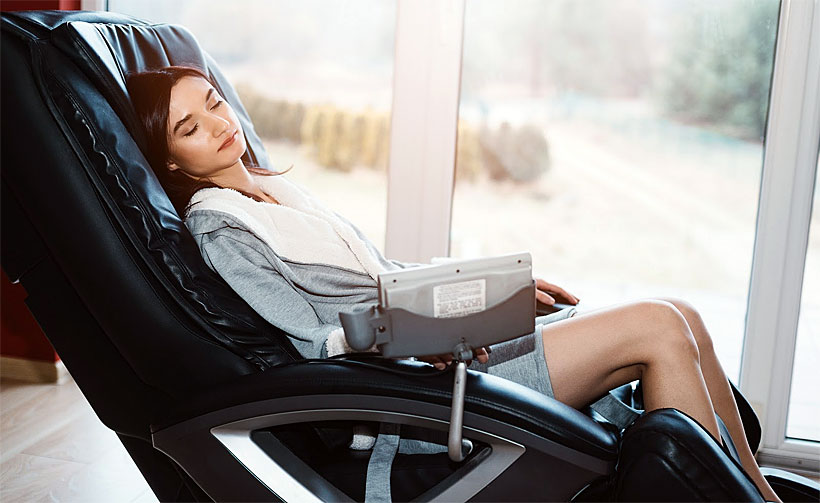 Everyone deserves to relax. Our daily lives are busy and stressful. But for an athlete, massages aren’t just about relaxation. Many pro athletes use massage therapy as part of their training regime, and the results speak for themselves. They’re able to exercise longer, have a better range of motion, and heal faster through tears and muscle fatigue. And that’s just the beginning.
Everyone deserves to relax. Our daily lives are busy and stressful. But for an athlete, massages aren’t just about relaxation. Many pro athletes use massage therapy as part of their training regime, and the results speak for themselves. They’re able to exercise longer, have a better range of motion, and heal faster through tears and muscle fatigue. And that’s just the beginning.
How does it work? This article can outline the amazing ways to boost your strength, dexterity and much more, whatever you put your body through.
Do You Need A Massage Chair?
The highest performance athletes incorporate regular massages in the days before and after an important competition. So, if you’re interested in getting more out of your workout but can’t quite swing an on-demand personal masseuse (like the majority of us), consider investing in the best massage chair for you.
Having a massage chair at home means you don’t have to add weekly or bi-weekly massages to your workout schedule or pay for each visit to a massage therapist to enjoy its many benefits. It also means that no matter what your workout schedule looks like, you can always find time to fit it in a massage session into your schedule.
And with all of these benefits, you’ll want to start incorporating massages into your workout routine as soon as possible, and ideally, as often as you can!
1. Improves Circulation
Massages can help increase blood flow and open your airways to improve oxygen flow, which helps improve circulation and even your heart rate. And improving your circulatory system can have a great impact on your overall workout.
It helps break down lactic acids and relaxes tense muscles. The more oxygen, the longer your workout, and the less likely toxins will build as you go. Making your workout even more effective, all while helping to keep your heart and lungs strong and healthy.
2. Increased Flexibility And Better Range Of Motion
The tension in muscles and joints have a direct impact on your range of motion. It’s true that you can gain some flexibility as you work out by working the same muscles, but over-working them can cause even more tension.
The pressure points in your body are often a source of tension that even the most strenuous workouts can’t loosen up. But regular targeted massages to your joints can help keep your joints and muscles relaxed, increase your flexibility, and improve your range of motion.
That means less pain and getting even more done during your workout. Whether you run, lift, or play strenuous sports you reap the benefits of better balance and improved stamina.
3. Faster Healing
Everyone has experienced a time when they’ve pushed themselves a little too hard. Reaching your limit is the first step to climbing over it, but getting over the ache from those tired muscles isn’t always easy. That pain can often cause less experienced athletes to hit a plateau in training.
A daily massage in your massage chair can help relieve the muscle tension brought on by strained and pained muscles, helping you to naturally manage and easy any pain effectively. Helping you to recover faster so you can get back to the daily grind.
4. Treats Pain
While we’re on the subject of pain, wouldn’t it be great to treat pain with a more natural medication? A daily massage may be a slower pain treatment than the instant effects of medication, but it’s a lot healthier.
Over the counter pain medication can cause liver and kidney damage, and prescription pain medication can have a variety of side effects and may even become addictive. Using a massage chair can help alleviate pain from pressure points, muscle strain, and more, to help you heal faster so you can get back to your life after injury.
5. Remove Toxins
We’ve already talked about how massages act to increase blood flow and oxygenation in the blood. But that’s just the beginning. Studies show that regular massages can work to dilate the blood vessels and increase the oxygen and nutrients that your body needs.
It also works a bit like a power washer, loosening up stubborn deposits of lactic acid and calcium, which build up as you work out. There are even studies which suggest that regular massage can help boost your immune system, by keeping your lymphatic system flushed out and improving your heart health.
6. Reduced Muscle Tension For Longer Workouts
All these health benefits add up to longer workouts that are far more effective. A daily massage in your personal massage chair will lead to less muscle tension as you push your body in training, or even in something as simple as your regular cardio exercise.
You’ll see improved flexibility, less injury, and potentially, even less illness. All of that allows you to push yourself and ultimately push your workouts. A daily massage is more effective for getting over a tough workout than an ice bath, and it means you take fewer days off your workout. All that, and you feel great, too.
7. Sleep Better
The best way to heal an aching body is a good night’s sleep. Your daily massage might be all about the workout, but it’s still relaxing and can have a positive impact on your biorhythms. Biorhythms are the signals your brain sends out to let your body know when to eat and sleep.
Exercise produces endorphins, and of course, muscle soreness that can impact your sleep pattern. But a good massage improves your breathing and circulation, combats soreness, and helps you relax.
That means better sleep patterns, so you can get up for that early morning run, or rest well even after the toughest day, or most strenuous workouts.
The Bottom Line
As an athlete, you’re used to pushing your body to the limit. But push yourself too hard and it’ll impact your body, your health, and your workouts. To get the most out of every workout, a daily massage is the key to healing your muscles effectively and quickly, without pain medication. It’s a great way to increase flexibility and blood flow, while having a host of other health benefits.
Conclusion
Remember that some muscle soreness is normal and necessary when making fitness gains, but extreme soreness is neither normal nor necessary, especially because it will interfere with your workout intensity for the rest of the week.
Since keeping up your workout volume and intensity is essential to any fitness goal, you’ll want to make sure you keep yourself fully functional.
Don’t let unnecessary muscle soreness stand in your way: experiment with the tips in this guide to find out what works best for you.
About Mae Barraclough
Mae Barraclough, B.S., NASM-CPT, NASM-CES is a certified personal trainer, corrective exercise specialist, and licensed Zumba Instructor. With her passion for health, fitness, and dance, Mae loves learning all she can and sharing her knowledge with others.

